

Hi! I’m Nora.
I’ve been a digital nomad since 2006. I’ve lived in and traveled through over 75 countries – in STYLE. And it all cost me way less than you might think. Stick around and I’ll share my story and teach you my tricks.
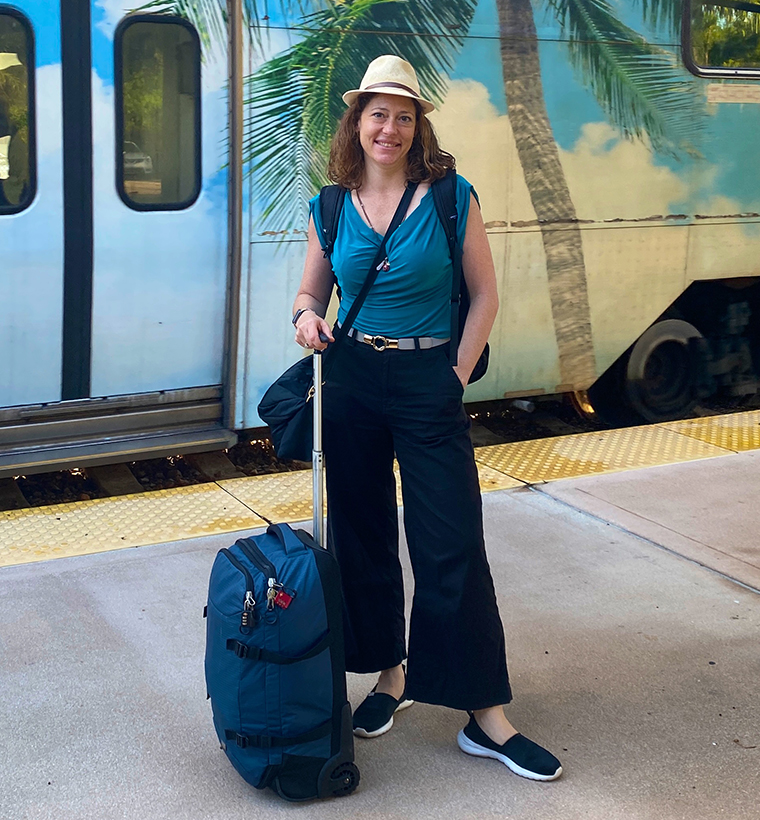
Destinations
Curious about all the places I have lived in or traveled through? Strap on your armchair and proverbially travel wherever you want with me, through my tales of adventure (and mis-adventure).
Top Articles
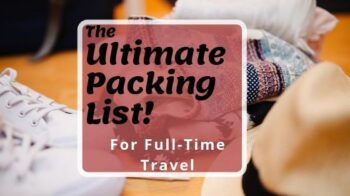
The Ultimate Packing List for Full-Time Travel and Long-Term Travel

12 Truths About Travel…and Life
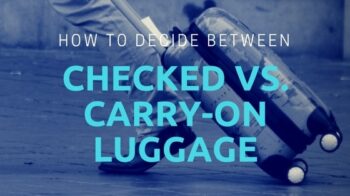
Checked vs. Carry-On Luggage: Which is Best?
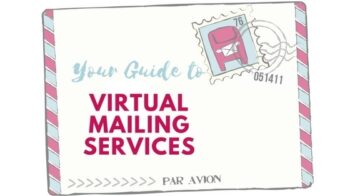
Best Virtual Mailbox Service: How to Get Mail When You Travel
How to live the digital nomad lifestyle.
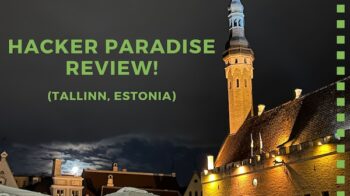
Hacker Paradise Review: Surprises (and Setbacks) I Had With This Work and Travel Program

Finding the Best eSIM for International Travel: Your Ultimate Guide
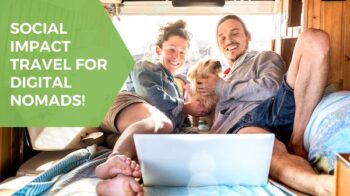
The Best Social Impact Travel Organizations for Digital Nomads to Consider

Worldschooling Communities, Courses, and Hubs to Get You Started
More Travel Lifestyle Guides
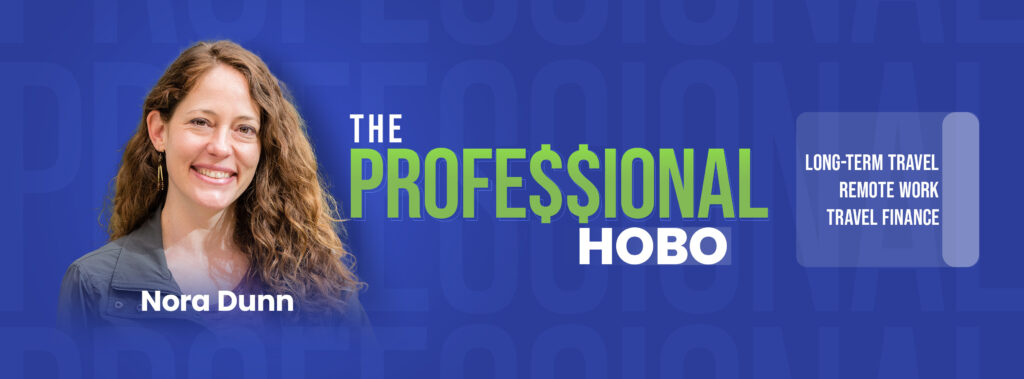
Binge my Videos
From the Travel Smart, In Style show, to travel gear reviews, to tales from the road, to The Remote Work & Travel Show, I’ve got hundreds of videos to keep you entertained.
Life on the Road / Travel Tales
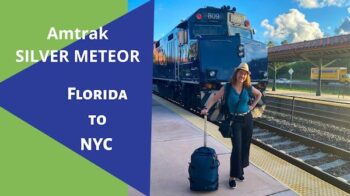
The Silver Meteor – Amtrak Adventures Part 4 (Florida to NYC)
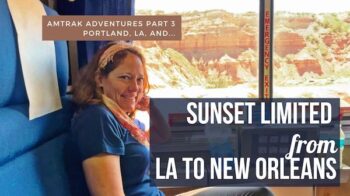
Amtrak Adventures Part 3: Portland, LA, Sunset Limited Train to New Orleans
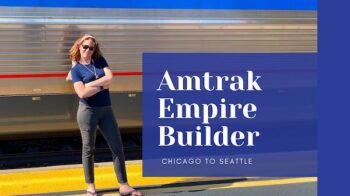
Amtrak Adventures, Part 2: The Empire Builder
More of Nora’s Travel Tales
The Remote Work & Travel Show

Digital Nomad Lifestyle Chat with Palle Bo, The Radio Vagabond

How to Move Abroad and Find Jobs, David McNeill, Expat Empire

How to Get Your Own TV Show, with Rachel Rudwall, Rachel Roams
More Engaging Interviews
You Don’t Want to Miss…
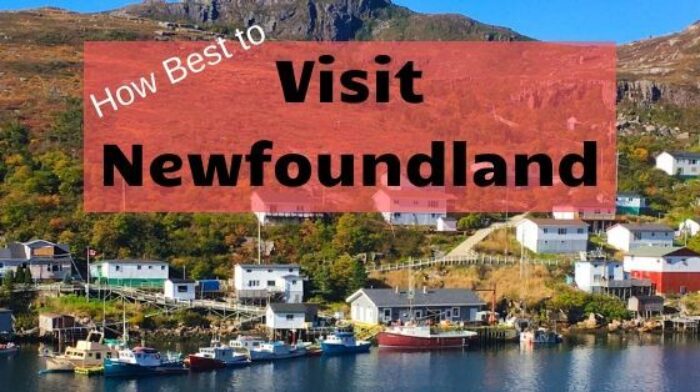
This is the Best Way to Visit Newfoundland

My Travel Capsule Wardrobe: Best Wrinkle Free Travel Clothes for Women
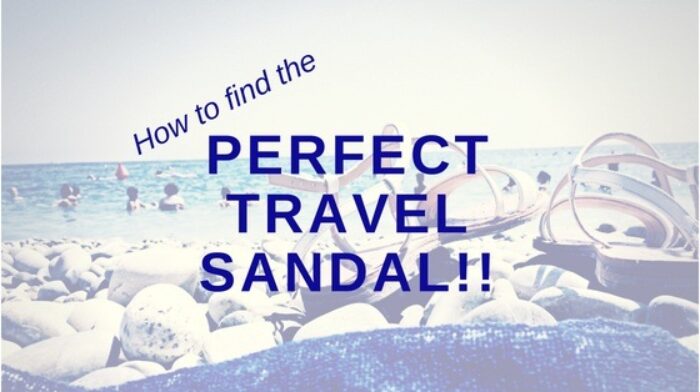
My Search for the Perfect Travel Sandal
More Interesting Posts
Financial Case Studies

Financial Case Study: Taylor (TaylsTravels): RTW Gig Worker
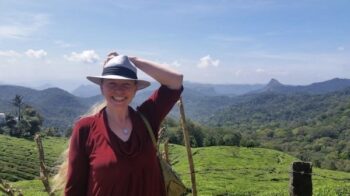
Financial Case Study: Layne, AI Operations Director

Financial Case Study UPDATE: Gigi Griffis, Writer and Content Strategist
More Financial Case Studies
More Amazing Guides

Best Digital Nomad Communities to Get Involved In

21 Local Coliving Spaces and Websites for Digital Nomads

How to Book Monthly Digital Nomad Accommodation (alternatives to AirBnB)
What is financially sustainable travel.
It’s based on 3 pillars:
Earning Money Remotely Spending it Creatively & Consciously Managing it Wisely
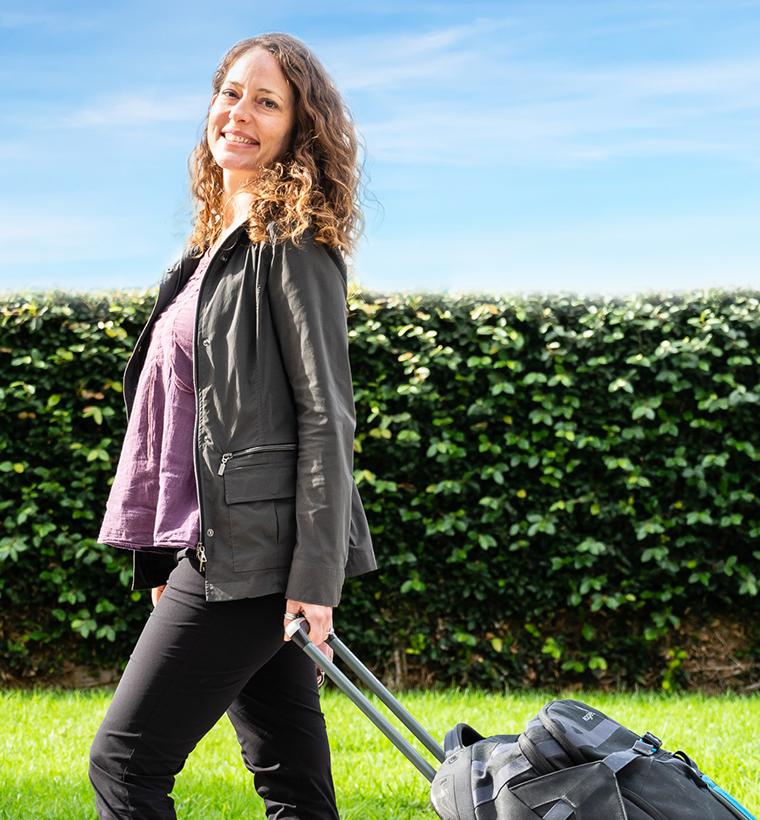
29 Things I’ve Learned from a Year of Nomadic Travel
When you’ve been on the road for a year, you learn some things. You learn things about yourself , you learn things about your partner, and you learn things about your priorities.
Before I launch into all of that and more from our year of nomadic travel, it makes sense to get into how we got here. For a bit of background, we closed on our house in San Diego in August 2021. We always knew we’d put the house up for sale when the numbers hit life-altering figures.
The pandemic spurred us into action, too. I had already quit my job teaching by then and was pursuing full-time remote work. Brian did the same with his insurance gig when we put the house up on the market. It was the epitome of a YOLO moment, a spark of, “If we can do what we’re doing anywhere, why not…do that?”
That’s how it happened. The house didn’t sit for long, we sold most of our stuff, and we hit the road . We stuck with the United States as an easy entry into our nomad trip, despite our desires to see the world. It was just easier to do that with a big dog and no home base.
Here we are, a year later, and I have all kinds of stuff to share about the rewarding bits about nomadic travel and the not-so-great things. I’ll keep things honest with you in case you’re thinking about hitting the road long-term yourself, including whether it’s been worth it in the end.
Disclosure: Please note that some of the links below may be affiliate links, including links through the Amazon Services LLC Associates Program. As an Amazon Associate, I earn from qualifying purchases . At no additional cost to you, I earn a commission if you make a purchase. I won’t recommend something I have not used/would not use myself, and any income earned supports the upkeep of this site.
RV life isn’t for me.

We considered an RV or #vanlife as an option for a hot minute as we were planning our escape. We booked accommodations in standalone RVs during a few trips coming up on our nomadic adventures to see what it would feel like, and quickly learned that it just wasn’t going to work. We already knew we weren’t tiny house people. Now we knew we weren’t RV people, either.
First of all, living in an RV doesn’t really save you any money. We’ve been a little more insulated from gas prices driving around in a hybrid, but you won’t get that when filling up your RV. Add maintenance costs and I’m really not paying much more for a long-term rental or night at a budget-friendly hotel.
It’s also monotonous looking at the same space day in and day out, without any separation from the driving to your sleeping to your relaxing. There’s zero privacy, which is pretty clutch when you’re doing the digital nomad travel thing and trying to maintain a positive relationship with another adult. Depending on the size of your vehicle, you may not be as mobile as you think, either.
Our RAV4 can pretty much go anywhere, from the bumpiest roads to winding mountain highways.
That all said, I envy people that embrace the nomadic RV life. These are likely super flex people who get their kicks out on the open road. You do you, RVers.
You need to be a good planner.
I’ve always been a Type A person when it comes to travel planning . I get down into the nitty gritty details with dates and times and attractions I want to hit by neighborhood in my multiple Google docs. As a nomadic traveler, I’ve had to become an even better planner, but that doesn’t mean planning with more detail.
It’s meant more flexbility. It’s about contigency plans if something falls through or the destination you were planning to hit is way over budget. It’s building in time for weather delays or the real life obligations you need to get to before you can go out and do the touristy things. It’s figuring out which pet stores carry the hard-to-find dog food your anxiety-ridden pup loves.
It’s planning on steroids.
It’s actually harder to plan ahead, not easier.
The world is your oyster when you’re a nomadic traveler in the sense that you can change your route on a dime if it suits you. That’s not always the easiest or most cost-effective course of action, though. It’s expensive to book accommodations last minute in most places. If you hit the Midwest during high season as we’ve been doing in our travels, you’re shut out of most of the best options well before your visit.
We’ve finally started planning some travel abroad the last few months after our COVID slump, which means making sure we’re in a location with dog sitters.
That often means family in our case. We never gave my mother grandchildren, so she treats Kimmy like a baby.
It can also be a challenge figuring out where to fly out of if you’re perpetually on the road.
We’ve taken to calling Chicago , my hometown, a travel base. Flights out of O’Hare are easy to find and often much less expensive than smaller regionals. That doesn’t mean it’s breezy to figure out how to drive back to Chicago whenever we need to if we’re on the West Coast . That’s a lot of driving.
Things WILL go wrong.

We’ve dealt with ants in the bed, dead mice in the kitchen, and last-minute cancellations on bookings. We’ve narrowly avoided tornadoes and driven through blinding storms. We’ve had to crawl through windows to get into our units. We’ve absolutely hated certain stops and felt sad leaving others. We’ve gotten COVID in the middle of multiple moves over the course of a week. Things will go wrong in your nomadic travels. You can’t control that. You can control how you react.
Take a deep breathe and don’t make any rash decisions when things go wrong. Your initial instincts on what to do next may not be the best based on your emotions. Just be cool, travelers, and keep things in perspective.
You can save money as nomadic travelers.
We lived in San Diego before hitting the road. We gladly paid what’s affectionately known as the “sun tax” to live in America’s finest city, but once we left, it really became quite apparent how expensive Southern California really is. We’d left Chicago, another fairly pricey city , to live in San Diego. Much of the country just isn’t that expensive in comparison, especially if you’re willing to sacrifice a bit to be outside of the thick of things.
Thanks to Brian’s financial prowess, we have more money saved today than we did when we sold our house. We’re certainly lucky enough to be able to make money from our savings through risk-averse decision-making on stocks and such — I say it that way because that’s not my arena — but living on the road has turned out to be cost-effective for us.
You can certainly blow your budget quickly as a nomad, but for many, it’s less expensive than a home base.
Cheaper is not always best.
My husband and I say this one out loud all the time: CHEAPER IS NOT ALWAYS BEST.
It took us a few disastrous stays to realize that cheaper isn’t better every time when it comes to where you lay your head at the end of the day. We spent a week in New Haven, Connecticut , in a space so small that I’d knock my knee into something every time I had to adjust my body. The aforementioned mouse in the sink was a fun find upon arrival at a place in the middle of the desert in Crestone, Colorado.
We’re not luxe travelers by any means. We want to see as much of the world as we can, which means traveling on a mid-range budget. Sometimes paying a little more pays dividends in terms of your comfort, safety, and sanity. Pore through reviews before booking apartments and hotels. Look for those red flags. Analyze those photos. Oftentimes, if the price sounds too good to be true, it probably is.
Sometimes the middle of nowhere is fun. Sometimes it isn’t.

The pandemic changed the way people travel. More and more people started looking for places to visit that were off the grid vs. the more popular spots around the United States. I love that people are getting out there more, but that means those off-the-beaten-path destinations have become more expensive for everyone else.
It also means the experience you were looking for — hyper-local, quiet, quaint — may no longer feel that way once you get there. It may look like Instagram influencers and crowded cafes and heavy foot traffic at outdoorsy destinations, instead.
That’s fine if you know what you’re getting yourself into. Browse through social media on destinations you’re interested in. If it’s blown up recently, it may not be as off-the-grid as you were hoping for.
The middle of nowhere can also mean:
- Limited Internet access
- Limited access to groceries
- Long drives from Point A to Point B
Just do your research, especially if you want to linger a while.
Your mother will worry about your nomadic travel.
Every time I talk to my mother, she asks the same thing: “Are you bored of this life yet?” My response is always the same: “How could I be bored of all things?!?” (Nevermind she’s gotten a trip to Nashville out of it.)
I’ve found sending regular photos helps, with a weekly phone call to allow her to hear my voice in real time. If your nearest and dearest are similarly anxious, make sure to keep in touch. They want to know you’re not only alive and well but thriving. If you’re not thriving because you just found a dead mouse in the sink, leave that part out. That’s a funny story for later.
Someone needs to get your mail.
You’d think in the digital world we live in, mail wouldn’t be that big a deal. It has to go somewhere, though. My mother receives all of the important stuff, and she couldn’t be more pleased about it. It means we have to come back at some point to sift through all of the junk mail she refuses to toss. “It’s up to a full drawer,” she likes to say.
It also gives her an excuse to call when something quasi-important comes through, like a warning from the Chicago Police Department about my speeding during our last visit.
You’ll see things you likely wouldn’t have otherwise.

Driving around the United States has exposed us to places that would never have been on our radar otherwise. We’ve stayed long-term in places like Augusta, Georgia , and Fairplay, Colorado. These weren’t on my American bucket list, and yet we’ve had some great experiences there.
We’ve stayed in all kinds of small towns along the East Coast, a reason why I’ve fallen in love with that part of the country.
Does it get better than fall in New England , by the way? No, it does not.
You need a home base.
I’m not saying you need a base to return to every few months. Your home base is the address you’ll use for things like your car registration, your license, your health insurance, and your taxes. For us, you already know that’s my mom. We also have a virtual mailbox through iPostal1 for blog purposes. It’s easy enough to set up if you don’t have a nosy mother of your own.
Here’s why we chose iPostal1:
- It gives you a real street address instead of a PO Box. This is important for some banking institutions and travel insurance carriers.
- They’re all over the United States. You’ll need to choose a base, but that can just be a place that you wouldn’t mind returning to once in a while.
- You don’t need to go there in person. They’ll forward your mail or scan it for digital access if you don’t need the physical letters.
- It’s budget-friendly. They have several plans that vary in price to suit your needs. We went with the most basic.
- They offer free storage. They’ll hold your mail or packages for up to 30 days, depending on the size.
Moving around every few days gets old.
Since we haven’t adopted the RV life, we have to unload and load the car every time we move from one place to the next. I don’t think we have an exorbitant amount of stuff, but we have enough that it can become a pain…especially if there are steep stairs or long elevator rides involved.
We’ve found a sweet spot of choosing destinations to settle into for up to a month at a time, but it doesn’t always work out that way. If we have our heart set on a destination because I’ve never been — I’m looking at you, overpriced Rapid City — we may only stay a couple days or up to a week if it’s too expensive for longer.
If we find somewhere inexpensive that we think we’d like within a short drive of more things we’d like, we may book a longer stay.
Flexibility is key.

We had the first six months of our travel planned out before we even hit the road. We didn’t look at prices at our chosen destinations much. We just felt like things would kinda fall into place as we went along on our journey and let our good fortune be our guide.
Well, things didn’t work out that way. Our goal of spending a full month in Savannah, Georgia , went sideways when we looked at what that kind of goal would cost us. We spent a few days outside of the city, instead, rather than a full month. Even the outskirts were beyond the reach of our budget.
It’s been a fine balance of planning ahead but not planning so far ahead that you’ll bum yourself out with constant adjustments.
Your relationships become more important than ever.
Nomadic travel can get lonely. It’s certainly nice to have a partner and a dog to share it all with, but you still feel a lack of community and a lack of connection when you’re not in one place for long. The relationships you have back at home, wherever that is, become so much more important.
I try to keep in touch with my close friends as much as I can, whether that’s simple texts, social media connections, or FaceTime with the select few who get that privilege.
We had some practice with this during the pandemic. We hadn’t seen much of our friends and family outside of our bubbles in California for quite some time when we decided to become digital nomads. Working remotely has also been a good trial run. That still doesn’t mean you don’t miss the ones you love when you’re out on the road.
Your friends and family will ask where you are every time you chat.
Don’t get weird about this. It’s hard enough for me to keep track and know exactly where we’ll be next week. I can’t expect the same from my friends and family. At least they’re asking. If they’re not, they probably don’t care.
What? People have a lot going on, and your galavanting around the country is probably not at the top of their minds. If they don’t ask at all, like ever, that’s really not cool, though.
You will see things that surprise you.

There are places in this country where moose walk right into the town’s coffee shops and stay a while. There are hippie towns in the middle of very red states and culinary delights in places you really didn’t consider before. In some places, pirates ride down the street on their scooters.
You’ll make all kinds of weird and unplanned stops as a travel nomad just because there’s no way to know about every little thing you’ll come upon while on the road. Embrace those little moments of magic, as you won’t always see things that delight you.
You will see things that frustrate you.
Our country is politically divided in a way I haven’t seen up to this point. That division presents itself in offensive bumper stickers and flags outside of people’s homes. Hey, freedom of speech is cool. A waving flag proclaiming “F*CK BIDEN!” without that asterisk isn’t cool, as these same people likely have quite a few thoughts about things their kids shouldn’t be exposed to.
Gun culture is all the more apparent if you’ve been on the road for a while, too.
Fun fact: There are towns in this country where bullets and guns are more accessible than affordable produce.
Food deserts are a huge problem. If the closest real grocery store is 45 minutes away from your house, you’re probably eating canned beans and Pringles from the Dollar General down the street, instead.
You’ll get treated like a local.
I always get a kick out of tourists asking me for directions when we’re in a place for a longer period of time. I usually have Kimmy with me, which is a good indicator for most that I’m a local. Unfortunately, I’m also terrible with directions, so I’m not usually much help in those situations.
Note: We’ve certainly been to a few places around the country where we just don’t fit in at all, and that’s OK. I’m fine with being just a visitor in those towns.
Prioritizing self-care will make you feel better.

It’s not just about trying the local pizza wherever you land and chugging beers on couches near and far. Nomadic travel is also about making time for the things that make you feel good. I’m talking about eating your veggies, exercising, and taking care of your mental health.
If we’re staying anywhere for more than a few days, we need kitchen access to make home-cooked meals. I’m not as young as I used to be and just can’t bounce back from eating out all the time anymore. Exercising is easy to do when you have plentiful access to hiking trails where you are. If that’s not where you are, get outside anyway. Put on a YouTube yoga session. Do a round on the in-house elliptical.
This isn’t me being nonsensical, by the way. We stayed in a place that was once a physical therapy office and the ellipitical was left behind.
Self-care is also about scheduling those appointments you’ve been putting off. We always know how to have a good time at our “home base.” That means dentist appointments, annual physicals, and whatever else needs to happen to keep us in tip-top shape and traveling as long as possible.
Less is more.
We sold quite a bit of our stuff after we left San Diego and put the things we’d want in a forever home in storage. That includes our bedroom set — my mom got that for us as a wedding gift per Polish custom — my childhood piano, and some other sentimental items we couldn’t part with at the time.
You’ve already heard about how annoying it can be to move stuff in and out of your car every few days, but you can certainly make that less annoying if you embrace the mantra that less is more.
This can become challenging when you have a bin of kitchen supplies for long stays and a large dog that isn’t the most low-maintenance creature on the planet, but we do our best.
Beware of toxic positivity.
One of my friends taught me about toxic positivity when we started out on this nomadic experience. That’s when you feel like you have to be super happy and optimistic all the time even when you’re not feeling that way. I felt like because we were doing this amazing thing, we weren’t ever able to talk about things that bothered us, or things that didn’t feel so great.
When you feel like the sky is falling, it can be hard to articulate that to others when you’re out there posting about all the cool things you’re doing. That’s why I try to be honest not only on social media but with our friends and family. It’s not all sunshine and ponies. We have a lot of fun, but we also feel things that aren’t always fun. We doomscroll just like you all. We have to take care of our mental health just like anyone else.
We’re just doing it from the road.
Sometimes you will feel very, very tired.

Travel can be exhausting. Even when it feels very rewarding and you see all kinds of amazing things , it can still feel like a lot. It’s like when you say you need a vacation from your vacation, which I know is a super annoying thing to say. Nomadic travel can be like that, but all the time…if you’re not careful.
Staying in destinations for longer stints has alleviated this somewhat, but we still go weeks where we’re just on the road constantly. That can mean working on less sleep than you’d like to fit in everything that you need (and want) to do. I know, poor me.
The work doesn’t disappear because you did something fun today.
Along those lines, when you’re in one of those busy periods where you’re moving from place to place every couple days, that perfect balance can be hard to achieve. I’m a freelance content writer. There are weeks where I have more to do than others, and days when I’m not on deadline.
That doesn’t include my blog. That also doesn’t include actually seeing the places we visit in any detail, or giving myself some downtime.
If I take a morning hike on a day with a looming deadline, that deadline doesn’t go away. Sometimes I’m at the mercy of my editors, too. I may not know something is coming in until the day it does.
Yes, the flexibility with nomadic travel is great, but it can also be stressful if you’re not great at time management. Thankfully, I’d worked as a freelancer before and got a taste of the hustle, but traveling while freelancing is another level.
Building in buffer time is a smart thing to do.
If I have any indication that I’ll have a busy week ahead, I try not to plan too much in the way of travel to account for that. That’s why staying places for a little longer is so great. That buffer time is built in to give me time to work and time to play.
We used to take very aggressive road trips where we’d stay in spots for a day, do all the things, and move on. We don’t do that anymore. If I know it’ll take us four days to see everything I want to see in a destination, I’ll request that we build in an extra couple days to account for work, blogging, and travel time.
Note: Not every attraction I want to visit wants my dog there, either. Buffer time is good for building in time to see things that aren’t pet-friendly, too.
Traveling with a dog is the best.

Kimmy has become quite the adventure dog and we’ve really watched her confidence grow over the last year. She loves to hike and hang out underneath tables at breweries. She still doesn’t love car rides unless she’s able to stick her head out the window. Her smile seriously lights up my life, so it’s great to have her around. Traveling with a dog can be so much fun, until it isn’t.
Traveling with a dog makes things more challenging.
Finding accommodations that take pets isn’t all that challenging, but you will end up paying more for that hotel room or apartment if you’re traveling with a dog. Pet fees are commonplace. I try to avoid them when they’re exorbitant enough, but if you have your heart set on a place, there may be no way around it.
If your pet has any special needs, nomadic travel becomes even harder. Luckily, Kimmy Kibbler is a healthy girl. She did have her first encounter with fleas in New Orleans, but thankfully her flea preventative meant we were able to nip those bugs in the bud after a medicated bath or two.
I’ve already mentioned scheduling all of your personal appointments to keep yourself healthy. You have to do the same for your pet. Kimmy got her last round of shots back in San Diego, but that’s likely the last time she’ll see that vet. I didn’t like how they were always trying to drug her, anyway.
You’ll only think of more places to visit.
Nomadic lifestyles mean you’ll see more than you would otherwise, but you’ll never see it all. I have a running list of places I’d like to see around the country. Many of those places are in states we’ve already explored. Every time we leave somewhere I’m left with a couple wish list items we just didn’t get to for whatever reason, whether that’s weather or time or expense.
For example, there’s a place in New Jersey that serves up a 1-pound mozarella stick. Obviously, that’s on the list. I want to return to the Finger Lakes because of crappy weather we got on our brief visit last time around. There are places all over New England I’d love to see that just require a little more pre-planning than we expected our first go-around.
Don’t worry, I have a global bucket list, too. I just can’t drive to those places. There are always new corners to explore no matter where you are, and I’m OK with that. It keeps the road exciting.
You’ll feel pretty dang lucky.

We still feel very lucky on a daily basis. We were able to do this thing at a relatively young age, and know that many people hope to do something similar once they retire. We understand our privilege and have no regrets.
Fun fact: If you’d like to follow in our footsteps, avoiding the kid trap helps. Seriously, kids are expensive. We wouldn’t be out here doing what we’re doing with a baby on board. Kimmy is enough.
It’s great for today, but maybe not for tomorrow.
There are still enough positives with nomadic travel that we aren’t going out and setting down roots anytime soon. A move abroad to France is as close as we’ve come and we have no regrets.
Initially, this experience was about finding a new place to live at some point. There was so much of the country we hadn’t yet seen. It’s become so much more since. It’s become about finding the hidden gems in cities and towns that aren’t on any shortlist for a more permanent move and finding places that are good for today if not for tomorrow.
I’m not sure where we’ll be a year from now, but it’s been quite the adventure so far. And it’s all been worth it.
Nomadic Travel: FAQs

You’ve likely had enough of my pontificating for now, but I wanted to get to a few frequently asked questions about nomadic travel. Off we go!
What is a nomadic journey? A nomadic journey is a journey that’s based on travel from place to place. You may have a set destination in mind, or you may only know about your movements a few weeks out.
It’s all about what you need and want from nomadic travel, and it’s certainly not for everyone.
Why do nomads travel? Nomads travel for a variety of reasons. Some want to see the world. Others have reached a certain age where they feel like now is the time get out of their comfort zone. Some nomads travel because of economic reasons. It can be quite cost-effective to avoid putting down roots for any period of time, especially if you choose budget-friendly destinations.
For us, the pandemic broke our brains a little bit. We just had to get out. We had to see more.
Where do nomads travel? Nomads travel wherever they like, with certain limitations in mind. If you’re traveling with a pet, you want to target more pet-friendly destinations. If you’re a solo female traveler, you may consider safety over anything else when choosing where to go next.
In our case, we stuck to the United States during our nomadic journey, but you can certainly take your nomadic journey abroad if you have the time, the means, and the desire to travel the world, instead. We hope to make that happen, too!
Are you a digital nomad? Have you been exploring your home country from the road? Are you a former nomadic traveler who said, “To heck with this!” after some time on the road?
I want to hear all about it! Share your stories with me in the comments.
Ready to Hit the Road?
Your Rental Car: If you’re not using your own car, you’ll need a vehicle to get from Point A to Point B. I usually use an aggregator like Hotwire or Priceline to find the best deal on rental cars, as I don’t feel a loyalty to any one car rental company. If you have to fly in from somewhere first, it’ll be most efficient to just rent a car right from the airport.
Flights : On that note, I use a variety of tools to find cheap airfare, but if you’re looking to book flights during a particular period of time, especially during busy times (e.g. school breaks), you should use Skyscanner . Whether you’re seeking flights in India or the United States, South Africa or Canada, it’s a great tool for when you’re more flexible, too. It allows you to compare travel based on length of travel, departure date, etc.
Your Accommodations: I usually recommend accommodations services like Booking.com and Hotels.com for your accommodation needs. Both offer loyalty programs, and now offer listings that are more of the home or condo rental variety.
Vrbo has become my go-to Airbnb alternative. Seeking even more wallet-friendly accommodations? Try Hostelworld . Their picks are heavily vetted and reviewed to offer you a safe experience on a budget.
Etc.: For general travel goodies, visit my Favorite Things page. For more information on planning your travel, visit my Travel Tools page.
Ready to join the nomadic travel group? Pin me!

More Content like This
- 11 Hikers to Watch for on the Trails
- Advantages of Travel at Every Age
- The Perks of Lazy Travel
- Hot Tips for Traveling as a Couple
Want to see more?
Subscribe to my biweekly newsletter for hot travel tips I come across, weird stories you won’t see elsewhere and perhaps lifelong friendship.
Too much, or just enough?
Agnes Groonwald
Leave a Comment Cancel reply
- Credit cards
- View all credit cards
- Banking guide
- Loans guide
- Insurance guide
- Personal finance
- View all personal finance
- Small business
- Small business guide
- View all taxes
You’re our first priority. Every time.
We believe everyone should be able to make financial decisions with confidence. And while our site doesn’t feature every company or financial product available on the market, we’re proud that the guidance we offer, the information we provide and the tools we create are objective, independent, straightforward — and free.
So how do we make money? Our partners compensate us. This may influence which products we review and write about (and where those products appear on the site), but it in no way affects our recommendations or advice, which are grounded in thousands of hours of research. Our partners cannot pay us to guarantee favorable reviews of their products or services. Here is a list of our partners .
9 Best Nomad Travel Insurance Options

Many or all of the products featured here are from our partners who compensate us. This influences which products we write about and where and how the product appears on a page. However, this does not influence our evaluations. Our opinions are our own. Here is a list of our partners and here's how we make money .
Table of Contents
1. World Nomads
2. safetywing, 3. atlas travel insurance, 4. allianz global assistance, 5. insured nomads, 6. img global, 7. heymondo, 8. travelex insurance, 9. aig travel guard, nomad travel insurance recapped.
Travel insurance can safeguard your nonrefundable reservations and reimburse you for any unexpected emergency medical costs that you incur while traveling. However, the travel health insurance needs of those taking several short vacations per year will vary from those of digital nomads, who may spend significant portions of the year living and working from abroad.
Digital nomads may also return home less often, travel with equipment (e.g., laptop, camera, etc.), participate in adventurous activities and want access to health insurance, especially if they don’t have that coverage back home.
Given the prevalence of remote work and increasing options to live and work from abroad, here you'll find some of the most popular nomad travel insurance options .
World Nomads is a travel insurance provider that offers coverage for residents of many countries and also allows you to extend your coverage mid-trip. It is underwritten by Nationwide Insurance. Regardless of which plan you choose, the health insurance limits are fairly good.
Importantly, the provider does not have a pandemic exclusion, so COVID-related claims are covered. However, World Nomads specifically states that fear of travel is not a valid reason for trip cancellation. So if you’d like the option to cancel a trip at your discretion, you’ll want to consider plans that offer Cancel For Any Reason coverage .
There are two trip insurance policies available from World Nomads: Standard and Explorer. The Standard Plan has lower coverage limits and includes more than 200 sports (including some adventure sports), while the Explorer Plan adds on 60 other activities and sports, including more dangerous ones such as shark cage diving, skydiving and paragliding.
The inclusion of athletic activities in both World Nomads plans is unique, since most traditional travel insurance plans exclude them.
Here's a list of what's included with World of Nomads coverage:
Trip cancellation, interruption and delay.
Emergency healthcare coverage, evacuation, repatriation and 24-hour assistance services.
Accidental death and dismemberment.
Nonmedical emergency transportation.
Baggage delay and loss.
Rental car damage (Explorer Plan only).
Adventure sports and activities.
And here are a few items of note that are excluded (not a comprehensive list):
Pre-existing conditions.
Self-harm or accidents occurring while intoxicated.
Finally, coverage can’t exceed 180 days, so if you’re traveling abroad longer than that, you’d have to renew your plan once the current coverage period ends.
To see how World Nomads compares to other travel health insurance providers, we considered a sample 180-day trip to multiple countries by a 30-year-old resident of Colorado.
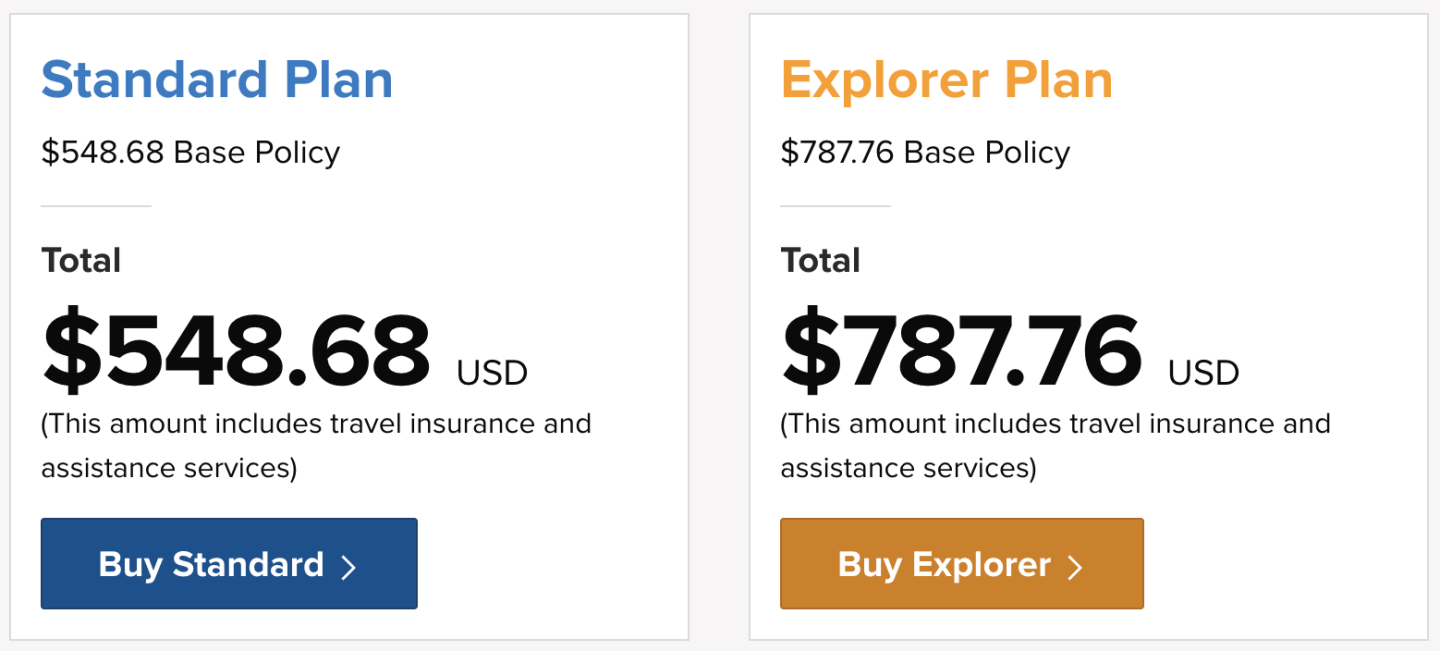
Due to the lower limits and less coverage for adventure activities, the World Nomads Standard Plan is priced at $549, which is meaningfully cheaper than the $788 Explorer Plan.
It's important to note that if your nonrefundable prepaid trip costs are more than $2,500, the Standard Plan will cover you only up to $2,500 on trip cancellation. In this case, you’d want to consider the pricier Explorer Plan, which provides coverage up to $10,000 on trip cancellation. Notably, emergency accident & medical coverage is $100,000 on both plans, which offers a lot of assurance, especially if you’re abroad for a long time.
The most significant advantage of World Nomads is coverage for adventure activities. In this case, assessing the suitability of the plan has more to do with the type of coverage you’re looking for than price. Because of the multitude of advantages of World Nomads plans over various providers, we've named World Nomads as one of the best travel insurance companies out there. Check out our full rationale here: Best Travel Insurance Right Now .
SafetyWing is another popular digital nomad travel health insurance option that also offers COVID coverage. You can purchase your policy while you’re abroad, which makes it easy for those who are already traveling and decide to get insurance coverage mid-trip.
Unless you are a resident of North Korea, Cuba or Iran, you can purchase a SafetyWing policy. The default length of coverage is 28 days, and the policy will continue to renew unless canceled (maximum policy length is 364 days).
SafetyWing also provides U.S. citizens with incidental coverage in the U.S. for up to 15 days out of every 90 days. Despite the U.S. coverage, SafetyWing is meant to provide medical and travel insurance coverage while you’re abroad; it does not meet the health insurance requirement under the Affordable Care Act.
Trip interruption and delay.
Emergency medical and dental expenses.
Emergency medical evacuation, repatriation of remains and accidental death.
Lost checked luggage and lost visa/travel documents.
Return of minor children and pets.
Political evacuation and border entry protection.
Excluded (not a comprehensive list):
Mental health disorders.
Intentional acts or damages sustained under the influence of drugs or alcohol.
The cost of a SafetyWing policy is based on your age and whether you’d like health insurance coverage while you’re in the U.S. For example, a four-week policy for someone aged 18 to 39 years old who doesn’t need health insurance coverage in the U.S. will cost $45. If you would like coverage while in the U.S., the policy cost jumps to $83.
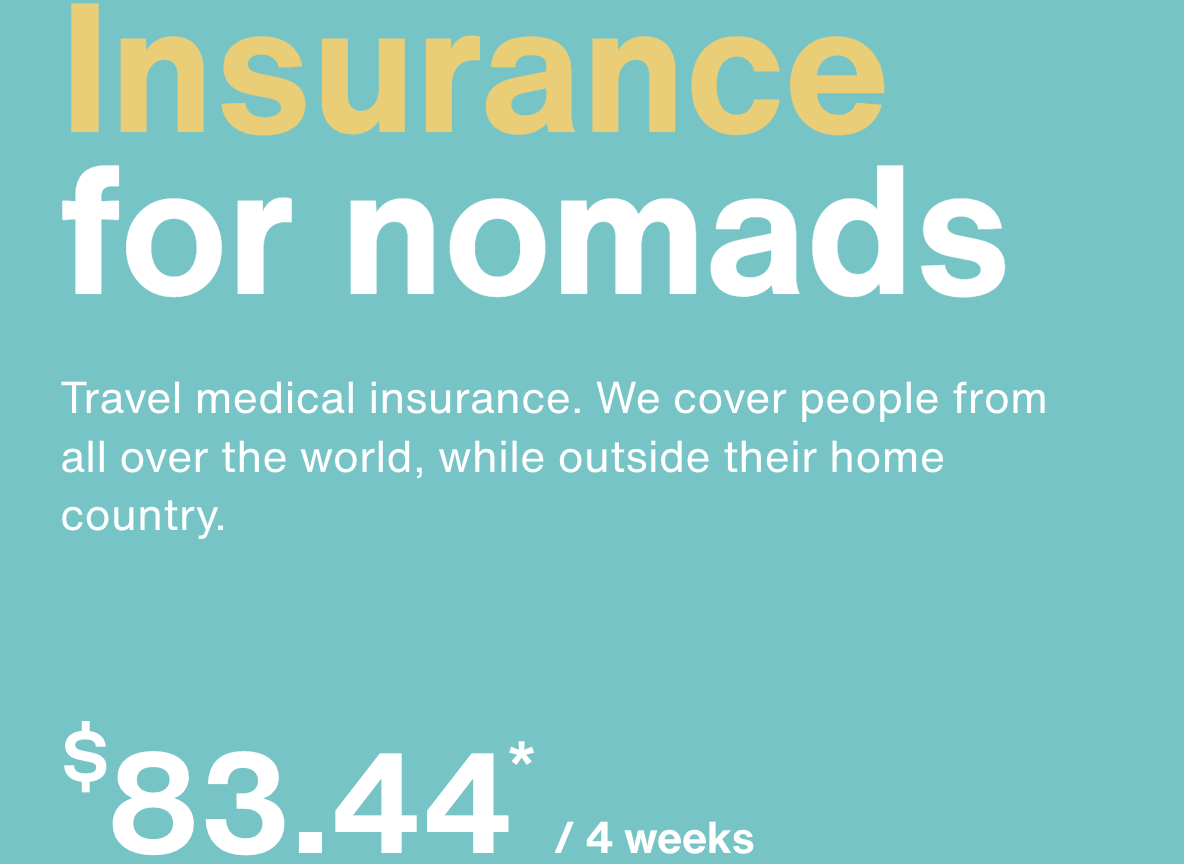
A 180-day coverage comes out to $290 for a traveler between ages 10 and 39, but increases to $536 if you want to add on U.S. coverage. A deductible of $250 applies every time you start or renew a policy.
Overall, the options to purchase a plan mid-trip and receive health insurance coverage while in the U.S. are some of the main benefits of a SafetyWing policy.
Atlas Travel Insurance offers health insurance plans for digital nomads and long-term travelers looking for medical coverage (including for COVID-19) and some supplemental trip benefits (e.g., trip interruption). When selecting a policy, you’ll need to specify if you’d like to include the U.S. within your coverage area. Coverage limits decrease with age, and the plans offer varying levels of deductibles.
Medical expenses and emergency dental.
Emergency medical and political evacuation.
Trip interruption; travel delay.
Lost checked luggage and stolen visa/passport.
Natural disaster and border entry protections.
Repatriation of remains; accidental death and dismemberment.
Many adventure sports.
Various diseases including cancer.
Self-inflicted injuries and those arising when under the influence of drugs or alcohol.
To compare these plans, we used the same parameters as the preceding example: a 180-day trip by a 30-year-old. Atlas offers two options to digital nomads: Atlas International and Atlas International Premium, which cost $274 and $682, respectively.
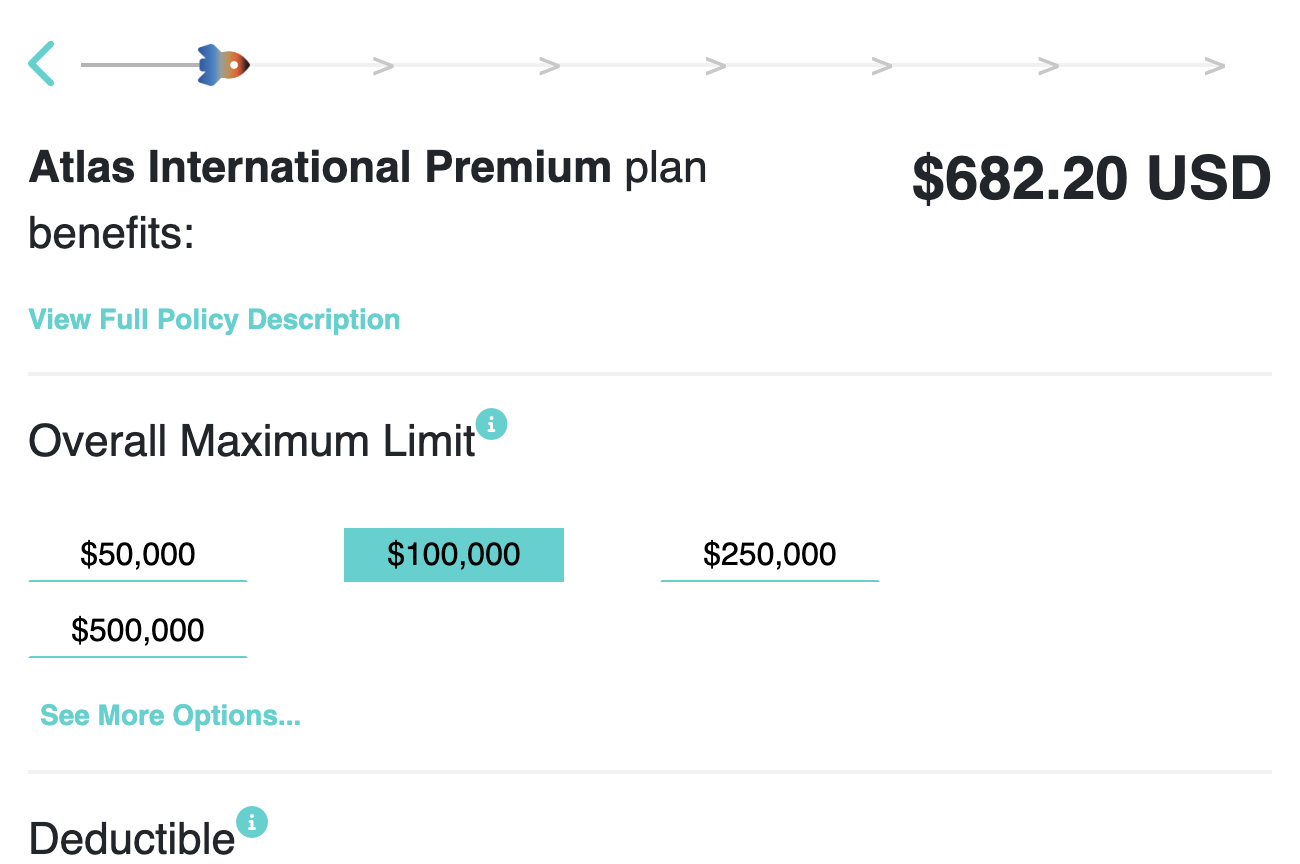
The main difference between these two Atlas plans is that the Premium option offers higher coverage limits.
It's also possible to customize the overall maximum limit and the deductible on both policies, so if you don’t want to go with the more Atlas International Premium plan, you can up the limits or change the deductible on the Atlas International plan.
Allianz Global Assistance offers affordable coverage for annual or multi-trip travel. It’s more cost-effective than purchasing coverage for separate trips individually. Allianz’s multi-trip policy covers trips up to 45 days in length.
Allianz is best for travelers who take multiple trips per year from their home base and not those who travel overseas for an extended period of time.
Covered illness.
Missed or delayed departures.
Baggage loss or delays.
A tropical storm (before it’s named).
Loss of passport.
Unforeseen pregnancy complications.
Losses that arise from foreseeable events.
War or civil unrest.
Participating in extreme or high-risk sports.
Flying an aircraft as pilot or crew.
Terrorist events.
Allianz plans limit or exclude coverage related to COVID-19 or resulting from Russia’s invasion of Ukraine.
Allianz Global Assistance offers a few annual plan options to digital nomads. The plans last a full year, so keep that in mind when comparing costs with other nomad insurance providers. The plans are Basic, Prime and Executive, quoting $138, $280 and $510 per year, respectively.

The Basic insurance plan from Allianz is designed for medical emergencies and provides some travel coverage, but it doesn’t provide any trip cancellation or trip interruption coverage.
The Prime plan provides affordable trip protection and medical coverage abroad.
The Executive plan is designed for business travelers by providing higher coverage limits and rental car damage and equipment rentals. The Executive plan covers personal vacations in addition to business trips .
It's also possible to sign up for a Premier plan, which lasts up to 365 days but covers up to 90 days of consecutive travel.
Insured Nomads provides medical coverage, travel insurance and trip cancellation to digital nomads, remote workers and expats.
Insured Nomads offers four plans, and they all have their own function. For example, the World Explorer plan provides coverage for a single trip lasting between seven and 364 days away from home, and the World Explorer Multi offers coverage for multiple trips within a single year. Plans are available to citizens of any country, not just the U.S.
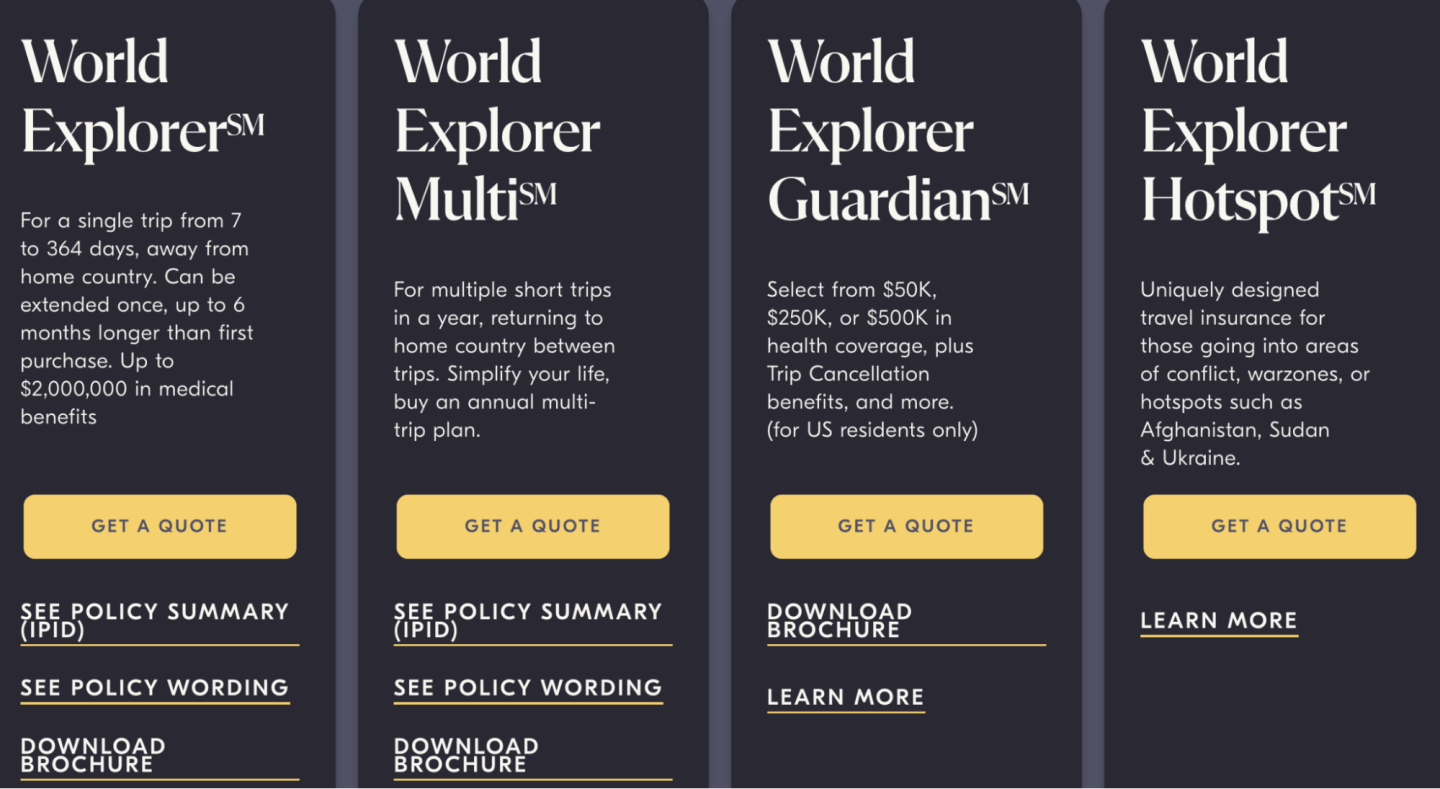
Depending on the plan, you’ll have the option to add adventure sports, pet insurance, accidental death and dismemberment and car rental insurance for an extra fee.
Medical benefits, including 24-hour emergency medical care.
COVID-19 coverage.
Acute onset of pre-existing condition.
Emergency dental treatment.
Local ambulance transport.
Natural disaster accommodations.
Evacuation and repatriation.
Airport lounge access for delayed flights.
Lost luggage.
War and terrorism.
Public health emergencies or natural disasters in countries deemed Level 4 by the U.S. Department of State.
Illegal acts.
Injuries sustained while under the influence of drugs or alcohol.
Extreme sports (unless an add-on was purchased).
The quote for a traveler between the ages of 30 and 39 looking to travel to Mexico for six months with the World Explorer plan costs $679. This plan has a medical benefit limit of $250,000 and a deductible of $100. Increasing the medical benefit maximum to $1,000,000 increases the premium to $830, and that’s without any of the additional benefits, such as adventure sports or marine activities.
» Learn more: How to find the best travel insurance
IMG Global offers an insurance plan just for expats and citizens of the world called Global Medical Insurance. It’s a medical-only plan that doesn’t offer trip protection, but offers medical coverage worldwide.
Several tiers of Global medical insurance from IMG Global are available: Bronze, Silver, Gold and Platinum. The more expensive the plan, the lower the deductible and the higher the policy maximum.
The following expat insurance rates are for a 30-year-old traveler whose primary travel destination is Spain.
The deductible amounts can be adjusted in every plan above to reduce the monthly payment. Additionally, the total coverage cost for the year can be reduced with an annual payment. An optional dental and vision rider is available for the policy you pick.
Undoubtedly, the cost is on the high end, but it does come with some noticeable extras, such as COVID-19 coverage , telemedicine and mental health professional counseling, that most travel insurance providers don’t cover.
It’s possible to purchase a World Explorer policy after you’ve left on your trip, and you can extend coverage by up to six months beyond the initial policy purchase.
In addition to the Global Medical Insurance, IMG Global offers the following plans to long-term travelers:
The Global Employer Option: Medical coverage for internationally assigned employees.
International Marine Medical Insurance: Health insurance for long-term (longer than one year) marine crew.
MP+ International: Group travel insurance for mission groups.
Heymondo offers comprehensive travel insurance plans to short-term and long-term travelers. Digital nomads and expats can purchase a Long Stay plan for trips longer than 90 days. The initial coverage is capped at 90 days, but you can renew if necessary. You can also add electronics and adventure sports riders to the Long Stay policy at an extra cost.
Coverage is available to travelers between 90 days old and 49 years old.
What’s included :
Emergency medical and dental coverage (with a $250 deductible).
Medical transport and repatriation home.
Baggage delay , theft and loss.
Travel delay or a missed connection.
Natural disaster.
Personal liability.
Accidental death or disability.
What’s not included (not a comprehensive list):
General medical check-ups.
Trips aimed at receiving medical treatment.
Burial, ceremony and coffin costs in the repatriation of remains.
Petty theft.
Damage caused by strikes, earthquakes or radioactivity.
Motor vehicles.
A 90-day global coverage that excludes travel to Canada and U.S. costs $257 upfront. You can renew coverage once it expires or prepay for additional coverage at the following prices:
30 days: $76.
120 days: $304.
180 days: $456.
275 days: $731.
Notably, medical coverage includes COVID-19, including medically prescribed PCR tests and extra lodging expenses when you’re prescribed a medical quarantine .
» Learn more: Best long-term travel insurance options
Travelex Insurance offers long-term nomad insurance with its Travel Select plan, which is one of the provider’s comprehensive travel insurance plans . This plan covers trips up to 364 days. You must select travel dates and provide the cost of your trip to get a quote.
A 30-year-old Colorado resident traveling to Italy for six months will pay $734 for a Travel Select plan from Travelex Insurance to cover a trip that costs $5,000. It comes with:
100% trip cancellation.
150% trip interruption.
$2,000 trip delay (with a $250 daily limit).
$1,000 baggage loss.
$200 baggage delay.
$50,000 emergency medical expense.
$500,000 emergency medical evacuation and repatriation.
$25,000 accidental death and dismemberment.
Pre-existing conditions waiver : available if purchase conditions are met (more on this below).
Add-ons to the Travel Select plan include double the medical expense, adventure sports rider, car rental collision protection , extra accidental death and dismemberment coverage and even Cancel for Any Reason coverage covering 75% of the insured trip's cost (though the covered trip cost maxes out at $10,000).
The good thing about this plan is it provides coverage for pre-existing conditions as long as you pay for insurance within 15 days of the initial trip deposit. Most annual policies notably exclude a pre-existing conditions waiver.
The bad thing is its high cost because of all the bells and whistles of a comprehensive plan.
AIG Travel Guard offers an annual plan that provides essential coverage to business and leisure travelers who are U.S. residents (not available for Washington state residents).
The Travel Guard Annual Plan is an option for travelers who take multiple trips within a single year (364 days), with a limit of 90 days per trip.
100% trip interruption.
Trip delay.
Missed connection.
Baggage loss or delay.
Medical expenses, including dental.
Emergency evacuation and repatriation of remains.
Non-flight accidental death or dismemberment.
Security evacuation.
War or acts of war.
Participation in a riot, civil disorder or insurrection.
Commission or an attempt to commit a felony.
Being under the influence of drugs or intoxicated above the legal limit.
Trips taken against a physician’s advice.
Release, escape or dispersal of nuclear or radioactive contamination, and pathogenic or poisonous biological or chemical materials.
A Travel Guard Annual Plan comes out to $242 for a Colorado resident, which is a pretty good deal considering all the inclusions — but remember that your trips cannot exceed 90 days each, so its usage is limited to remote workers taking shorter trips.
» Learn more: How much does travel insurance cost?
Expats and digital nomads have different travel health insurance needs than the average traveler, so choosing a policy that aligns with your travel style is advisable.
If you’re looking for adventure sports coverage, World Nomads, Insured Nomads, Heymondo and Travelex Insurance all have the option to add a rider to their policies.
However, if those benefits aren’t relevant to you and you’d instead prefer to have the option of medical coverage when you’re abroad (and to a certain degree while you’re in the U.S.), consider SafetyWing or Atlas, which offer this feature. For medical-only coverage, IMG Global provides some options, albeit pretty expensive ones.
Additionally, take into consideration your travel style. Are you taking one long trip or multiple shorter trips within one year? Because Allianz and AIG Travel Guard won’t work well if you plan to be abroad longer than the limit specified in the policy.
How to maximize your rewards
You want a travel credit card that prioritizes what’s important to you. Here are our picks for the best travel credit cards of 2023 , including those best for:
Flexibility, point transfers and a large bonus: Chase Sapphire Preferred® Card
No annual fee: Bank of America® Travel Rewards credit card
Flat-rate travel rewards: Capital One Venture Rewards Credit Card
Bonus travel rewards and high-end perks: Chase Sapphire Reserve®
Luxury perks: The Platinum Card® from American Express
Business travelers: Ink Business Preferred® Credit Card

on Chase's website
1x-10x Earn 5x total points on flights and 10x total points on hotels and car rentals when you purchase travel through Chase Travel℠ immediately after the first $300 is spent on travel purchases annually. Earn 3x points on other travel and dining & 1 point per $1 spent on all other purchases.
75,000 Earn 75,000 bonus points after you spend $4,000 on purchases in the first 3 months from account opening. That's $1,125 toward travel when you redeem through Chase Travel℠.

1x-5x 5x on travel purchased through Chase Travel℠, 3x on dining, select streaming services and online groceries, 2x on all other travel purchases, 1x on all other purchases.
75,000 Earn 75,000 bonus points after you spend $4,000 on purchases in the first 3 months from account opening. That's over $900 when you redeem through Chase Travel℠.

1x-2x Earn 2X points on Southwest® purchases. Earn 2X points on local transit and commuting, including rideshare. Earn 2X points on internet, cable, and phone services, and select streaming. Earn 1X points on all other purchases.
85,000 Earn 85,000 bonus points after spending $3,000 on purchases in the first 3 months from account opening.

- Nation & World

1 million Americans live in RVs: Meet the ‘modern nomads ’
About a million Americans live full-time in RVs. Many say this modern nomadic lifestyle has improved their marriages and made them much happier.
Share story
When Robert and Jessica Meinhofer told friends they were moving into an RV in 2015, most thought they were crazy.
The questions poured in: How could they go from living in a 2,000-square-foot home to living in a 250-square-foot trailer? What would they do with their stuff? What would their children, ages 6 and 9, do for school? Was this a midlife crisis?
The hardest people to convince were Jessica’s parents, who grew up in an impoverished Latino neighborhood in the Bronx and worked hard so their daughter could have a better life. They couldn’t understand why the couple wanted to live like migrant laborers.
The Meinhofers are doing this by choice, not financial desperation. They are part of a movement of people ditching “sticks and bricks” homes that have long embodied the American dream and embracing a life of travel, minimal belongings and working when they want.
Most Read Nation & World Stories
- Massive melon-size hail could be a Texas record
- Should You Delay Your Morning Caffeine?
- WA family sues butcher who slaughtered pet pigs when he went to wrong house
- During impassioned defense of Trump, congressman’s 6-year-old steals the spotlight WATCH
- 'Shark!' Swimmers race to save bleeding man off Southern California beach
“We’re a family of four redefining what the American dream means. It’s happiness, not a four-bedroom house with a two-car garage,” said Robert Meinhofer, who is 45.
The Meinhofers and a dozen others who spoke with The Washington Post about this modern nomadic lifestyle said living in 200 to 400 square feet has improved their marriages and made them happier, even if they’re earning less. There’s no official term for this lifestyle, but most refer to themselves as “full-time RVers,” “digital nomads” or “workampers.”
Most modern nomads need jobs to fund their travels. Jessica Meinhofer works remotely as a government contractor, simply logging in from the RV. Others pick up “gig work” cleaning campsites, harvesting on farms or in vineyards, or filling in as security guards. People learn about gigs by word-of-mouth, on Workamper News or Facebook groups like one for Workampers with more than 30,000 members. Big companies such as Amazon and J.C. Penney even have programs specifically recruiting RVers to help at warehouses during the peak holiday season.
A million Americans live full-time in RVs, according to the RV Industry Association. Some have to do it because they can’t afford other options, but many do it by choice. Last year was a record for RV sales, according to the data firm Statistical Surveys. More than 10.5 million households own at least one RV, a jump from 2005 when 7.5 million households had RVs, according to RVIA.
Interest in “RVing” — either full time or on weekends — appears to be picking up, especially among young couples. Half of new sales are going to Americans under 45, and purchases by people of color are rising, RVIA found in its 2016 surveys, a change from the 20th century, when white retirees dominated campsites.
Below, four families — with members ranging in age from 2 to 84 — share their experience of life on the road.
Current location: Tennessee. Vehicle: 2004 Tiffin Phaeton (They bought it used for $67,000).
Penni Brink, 62, and Chip Litchfield, 59, have a “Welcome to Margaritaville” sign outside their RV and the kind of easygoing spirit that immediately draws you in. The couple met in the late 1980s when they were working in the same business complex in Vermont, but Litchfield was married to someone else at the time. Their paths crossed again a few years ago at a craft fair and as their relationship blossomed, Litchfield suggested they travel in an RV. Brink was apprehensive.
“I made it clear I needed a big fridge in the RV because I like to cook,” Brink said. “And I needed more than a tiny little bathroom.”
Litchfield took Brink to a used RV lot just to “check it out” in 2015, but they ended up buying a 395-square foot camper they call “Daisy.” They say they love this lifestyle now and have no plans to return to a typical home. Brink is selling her condo in Montpelier, Vermont, because they don’t think they’ll need it anymore. They track how many states they have been to on a map on the side of their RV. The tally is now 25.
“Our goal is to be able to travel and work at the places we travel to so we can stay in areas long enough to get to know a place and see America,” Litchfield said. “There is so much work out there for us, and we don’t have to make a lot of money.”
Brink hung a “less is more” sign in the RV and has become an expert at cooking on a stove top that’s about a third the size of a typical range. She used to run a small business in Vermont making drapes, blinds and other home décor and still does some work for clients in the RV. She sets up a folding card table for her sewing machine and sends Litchfield outside to clean the vehicle so she can have more space.
As they travel, they often pick up jobs to earn money because they don’t want to tap their modest retirement savings, which they dipped into to buy the RV. Right now, they are working in the Amazon CamperForce program that hires about 700 people for warehouse jobs and pays their campsite fees. It’s hard labor but the money they earn from September to Dec. 23 is enough to allow them to take the winter and spring off. (Amazon founder and chief executive Jeff Bezos owns The Washington Post.)
“Being able to travel in my 60s and see all the things I missed in my younger years is the best part of this lifestyle,” Brink said.
Current location: Georgia. (Last year they traveled from Maine to Florida for six months). Vehicle: 2016 Forest River Grey Wolf 26DBH Travel Trailer. (They bought it for $22,000 and tow it behind a truck).
Robert Meinhofer, 45, and Jessica Meinhofer, 40, have been living in their RV for three years and don’t have any plans to return to their old life in suburbia.
As they started having kids, the Meinhofers wanted more time with them than a typical day job would allow. They watched a YouTube video of a family that traveled the country in an RV and thought, why not us?
“We both had full-time jobs. We were doing the 9 to 5 grind. We had the house, but it just didn’t fit us quite right. We were just working, working working,” Jessica Meinhofer said. “We were longing for freedom.”
When Robert Meinhofer was offered a job in Atlanta working for an airline, they didn’t think they had enough money to buy a “proper house” for their two kids, their dog and their cats. So they decided to take the plunge on the RV lifestyle. Jessica Meinhofer persuaded her company to let her work remotely so she could home-school their children and work in the RV anywhere in America. Robert Meinhofer works four days at the airline and then gets four days off, which he spends with his family in the RV.
Jessica Meinhofer warns it’s not all fun. “Instead of mowing the lawn, we do maintenance on the RV. Things don’t last as long as they do in a house. The level of chores is about the same,” she said, adding that they have to go to the laundromat now. “But it gives us the freedom to be by the beach one day, a mountain the next or a lake. It’s made all the difference for us.”
The Meinhofers have met a lot of families with kids on the road, but they haven’t encountered many other Latinos. They think there’s a perception in some communities of color that doing this means you are destitute. They are trying to inspire others to join them with their YouTube channel, Exploring the Local Life, which has become so popular it is making them money.
Current location: Wichita Vehicle: 2012 Tiffin Allegro RED Diesel. (They paid $150,000 at an RV show in 2014).
Joyce Ann Seid, 84, and Steven Seid, 77, bought their first RV in 2001 to travel on weekends to see the grandkids and visit casinos and parks. By 2010, they moved into the RV full-time. “We rented our house and wound up getting a bigger RV and then we wound up living in it because we liked it so much,” Steven Seid said. “If we don’t like our neighbors, we just pack up and leave.”
The couple drive around the country in the warm months and spend the winter in Arizona where they own a lot in a gated RV community.
Steven Seid wanted to go on the road for years, but Joyce Seid said she wouldn’t do it unless he made her a home office where she could write a book. Steven Seid gutted the little room in the RV that had a bunk bed and turned it into an office. Together they remodeled much of the interior, adding sunflowers, a reminder of Joyce Seid’s home state of Kansas, and their RV has a washer and dryer.
They mostly live off their retirement money, but they pick up various jobs to help pay for vehicle insurance and RV repairs. Steven Seid worked several years in the Amazon CamperForce program, priding himself on being one of the oldest in the warehouse.
“We’re old people, but we hate being retired. We like working,” Steven Seid said.
Joyce Seid, a retired professor, jokes that her husband is earning her “Bingo money.” She’s played plenty of games in Kansas, Missouri and Oklahoma and is quick to point out there is free parking, even for RVs, at many casinos.
The Seids say they love it on the road. When Joyce Seid had a stroke two years ago, friends in the campsite pitched in immediately to help and they were able to get to a hospital quickly.
“This is a great life. We meet the nicest people,” Steven Seid said.
Current location: Tennessee. Vehicle: 1999 NuWa Hitchhiker Premier (Bought for $10,000).
Richard Booher, 58, and Miranda Booher were debating doing the “small home” lifestyle when a friend advised them, “you don’t want a small home, you want an RV.” They had never even been in an RV before, but they bought a Hitchhiker in 2016 that attaches to their pickup and took their family — five kids and a 10-year-old dog — on the road.
“It’s been awesome,” Richard Booher said as he watched his 5-year-old son Teddy bike around the campsite. Later the kids, ranging from 2 to 10, went to the campsite pool and quickly made friends.
The Boohers wanted to show their kids more of America and get closer as a family. Accumulating stuff stopped mattering to them. Instead, they wanted to accumulate experiences. Miranda Booher teaches the kids and is a coach for a Christian organization called Mothers of Preschoolers (MOPS) that helps bring moms of young children together for support and fellowship. The Boohers get plugged into a church wherever they go and find lots of activities for the kids between church and the campsites. Teddy and Amy, 7, are eager to show off the Macarena dance skills they picked up at a recent kids party at a campsite.
Richard Booher is working at with the Amazon CamperForce program for the second year. He’ll be at the warehouse from September to December. It’s very different from his career in IT, but the income allows the family to live this nomadic lifestyle. He earned $11.50 an hour at a fulfillment center in Murfreesboro, Tennessee, which went to $15 an hour in November.
When the job ends on Christmas Eve, the family heads to Dade City, Florida, to be near old friends for a few weeks before figuring out their next steps. Earlier this year, Richard Booher had a job offer to work at an Amazon return center in Kentucky, so they headed there for a few months.
“The kids have so many friends everywhere we go,” Richard said. “You can definitely do this with kids.”
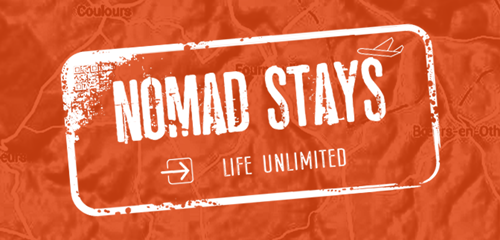
Tips For Solo Traveller to Explore Russia-
Tips to explore russia as a solo traveller.
Russia is a great place to discover, to live, to travel, to explore, to work in and to simply be in…
Yet, is still not very known ad popular among a lot of travellers and Digital Nomads. In this article, I share my experience of living and working as a freelancer in Russia around how to travel in Russia as a solo traveller.
Rusia or commonly known as “the Russian Federation” it is the largest country in the world spanning over 17 million square kilometres over Eastern and Northern Asia. It encompasses more than one-eighth of the Earth’s inhabited land areas with a population of 144.4 million people.
When Travelling in the cities like Moscow and St Petersburg some people might find it is not cheap and might be a bit of a shock to the wallet if you are going to a tourist destination and as a foreigner. you might discover you are paying up to 10 times the price as a Russian for museums and other institutions so if you are a student it is worth flashing your student card to get a discounted price. That’s according to the Lonely Planet article!
However, my experience is different as a seasoned traveller rather than a tourist or short term tourist. The time, I have spent in these cities, I have found I am able to go to the more local hangouts and avoid the tourist jaunts and follow my nose to the more cultural everyday experiences. I am not there to be a tourist I am there to absorb, learn and observe the culture and deep dive into its complexity, landscape to have truly meaningful experiences. That’s the difference between travelling slowly as a nomad and travelling as a seasonal tourist.
So let me take you on a quick travelling solo in Russia journey of things to know. There is a lot so I hope you can digest it all and it’s not your average list of tips it’s more informative from one nomad to another.
Get Lost, Travel Slow & Best time to be in Russia
- Explore small cities and villages, hop on and off trains and explore less known areas.
- Go slowly, when you move and when you make friends. Russians are extremely friendly but they need few minutes to days to trust you and open up. Be patient
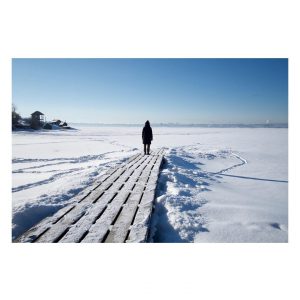
- Experience the winter. It is not for everyone but it is the key to learn about Russian cultural behaviour and way of living and thinking.
- Live the summer! Russians will spend outside as much as they can on their warm days. From May to September is the best time to be in the country. Winter is harsh but it will have a huge impact on you and it will make you understand a lot about the culture. Summer is the best time to move around, especially in the North of the country with 24 hours light long days!
Eat, drink Tea and Share
A lot of traditional dishes have dairy or meat products in but it is extremely easy and satisfying to follow a vegan diet. Here are some little tips about what to expect when in Russia and how you can have the best experience. Throughout the global glitch of 2020/2021 I have spent over a year in Russia exploring and spending time enjoying the culture and working remotely as a freelancer. I love to go off the beaten track, that’s my thing and I always curious about different cultures.
- Be polite and respectful. Russian people are extremely polite and well behave, when they speak and when they act.
- Tea is the main drink here. Coffee is found everywhere but in houses and family tea is the favourite and you will spend afternoon and evenings drinking it
- Get ready to spend a lot of time around kitchen tables, talking about life, friends, travels, work etc, drinking tea and eating nuts. See this related blog: Try to follow a more sustainable diet
A tiny peek into the essence of Russia

- Russia is a federal republic divided into 81 (I think) objects, some of them are republic (where different ethnicity are living) others are called oblast. Russia is diverse. Extremely diverse. Observe and learn the difference from one Oblast to the other.
- Be patient with bureaucracy and remember the basic rules and laws about your visas, paperwork and what to do and not do. Russian bureaucracy is…. slow, confusing and can be frustrating. Be patient if you have to deal with it.
- Russians love when you talk about their country and when they realise you know something about it, especially the language.
- Know a bit about the history. The country is still very attached to its past. The youngsters are changing things but there is still some pushback. Russia History is not only the Soviet time, learn more about what happened before you go.
What to Pack…
- Pack for many seasons. Weather changes quickly, summer are short but extremely hot in the South and still cool in the north
- Pack lightly, it will be easier to jump on and off trains. Travelling is about experiences to collecting excess stuff so, travel light.
- Bring a tent with you. Going camping, even alone is a great experience. It is easy, accessible and very safe. Trains will take you everywhere and it is very easy to find a nice spot to pitch your tent and live the nature.
What About Getting Around…
- Hitchhiking is safe, easy and very very popular in the country! Give it a go.
- Taxies are cheap, taxi drivers are friendly, polite and honest. It is very safe to move around as a woman, even walking around at night. Of course, keep your eyes open on the area and people but do not be afraid.
- Russia is not only ballet, opera and Tchaikovsky (even though you should definitely educate yourself on those). The contemporary music scene is very active and alive with concerts, events and festival taking places very very often in main cities.
- Visit Saint Petersburg is young, active, arty and extremely alive in every season, makes it a perfect spot for a solo digital nomad or traveller.
Here is another thing to keep in mind…
- Some men won’t shake hands with girls in the group but only with other men. Do not get offended and make a scene. It is not discriminatory to women it is just a ‘brother’s connection’ gesture.
- If you are looking for a place to start your journey in Russia to stay check out Nomad Stays.
Explore More
Russia is a place that needs to be discovered, understood and experienced deeply. Do not judge from the first impression, people, places, ideas…. Russia will make you fall in love with ‘her’ slowly, the longer you spend there, the more you will understand and suddenly you will realise you are in love with ‘her’.
There are hundreds of point interesting points to discuss being here as an Italian Freelancer in Russia. Just being, moving around and living in Russia and its ‘Russianity’.
It is a unique place in the world, it is magic, harsh, honest, arty, melancholic, green, diverse, lovable and ‘hateable, it is difficult and easy at the same time. Sometimes you love it deeply and sometimes you want to run away from it, but it will grab you with intensity and passion and that’s, in my opinion, is the best you can dream of from a life experience.
Connect with and follow Alice Here

With Love From Russia Alice Pontini
Freelancer, Tour guide, Italian digital nomad currently in Russia for a year and who knows where to next!. Nomad Stays is proud to have her as part of our team managing Pinterest and Newsletters to the nomads giving you insights on the latest at Nomad Stays. As a nomad herself and extreme adventurer and solo traveller who better to give you these insights.
She is ‘best’ above 2000 meters altitude, she owns three T-shirts and thirty pairs of earrings. She tries to learn languages with pretty alphabets and she never picks up hot mugs by the handle.

Post a Comment cancel reply
Save my name, email, and website in this browser for the next time I comment.
This site uses Akismet to reduce spam. Learn how your comment data is processed .

Lorem ipsum dolor sit amet, consectetur adipisicing elit sed.
Follow us on

Travel smarter, cheaper, longer
Where do you want to go.
Popular Searches: Southeast Asia , Europe , travel hacking , insurance , Paris
Get my best tips sent straight to you!
Start planning your trip.
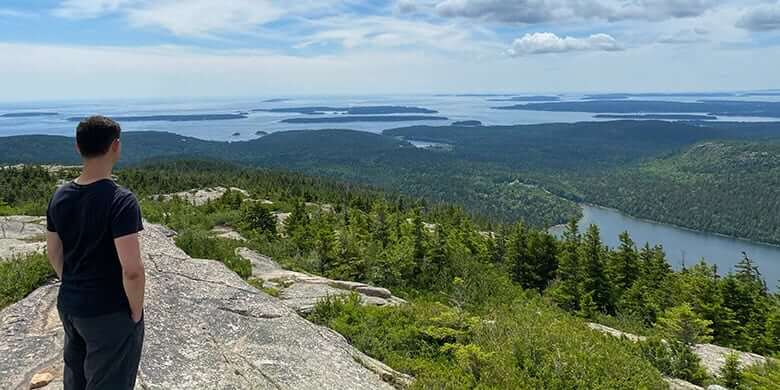
Getting Inspired

How to Save For a Trip
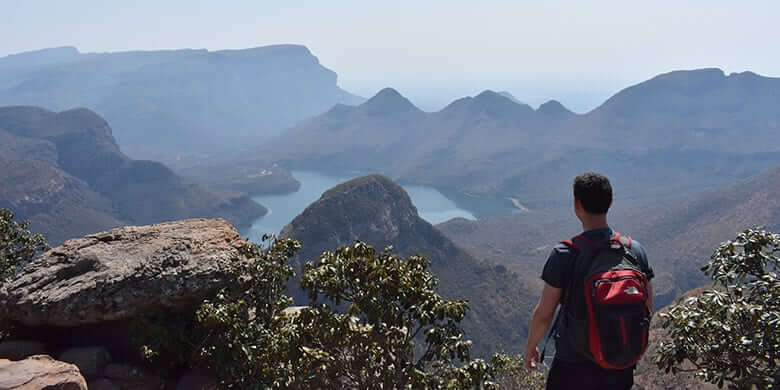
How to Plan Your Trip
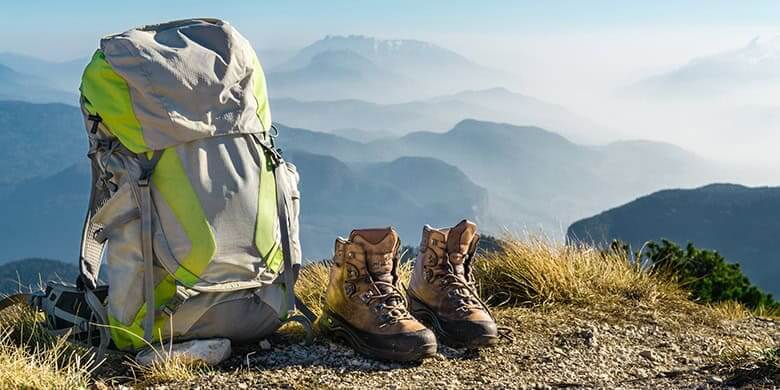
Getting the Right Gear
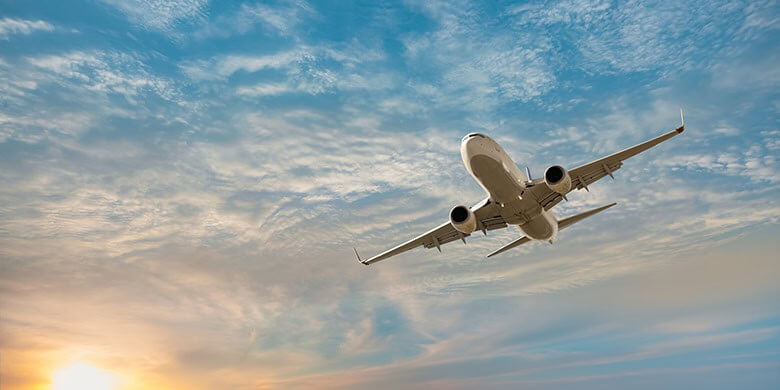
Finding Cheap Airfare

Finding Accommodation

Life On The Road
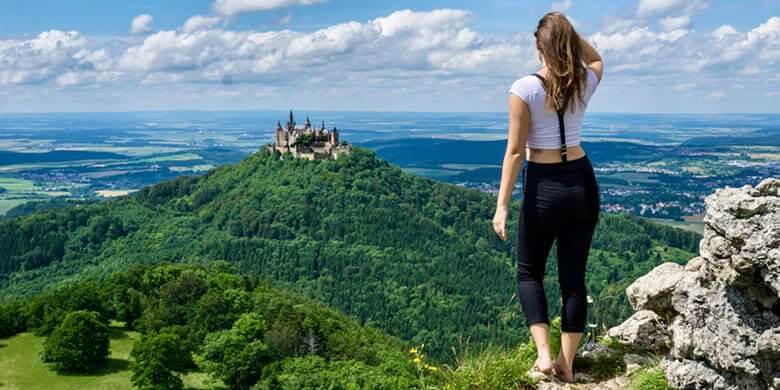
Solo Female Travel
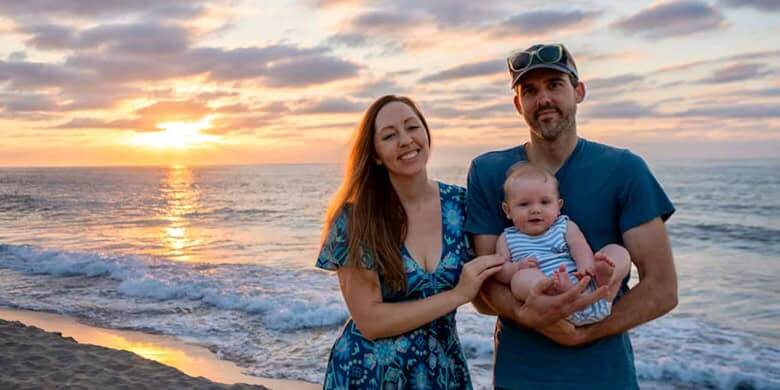
Family & Senior Travel
Hello i’m nomadic matt.
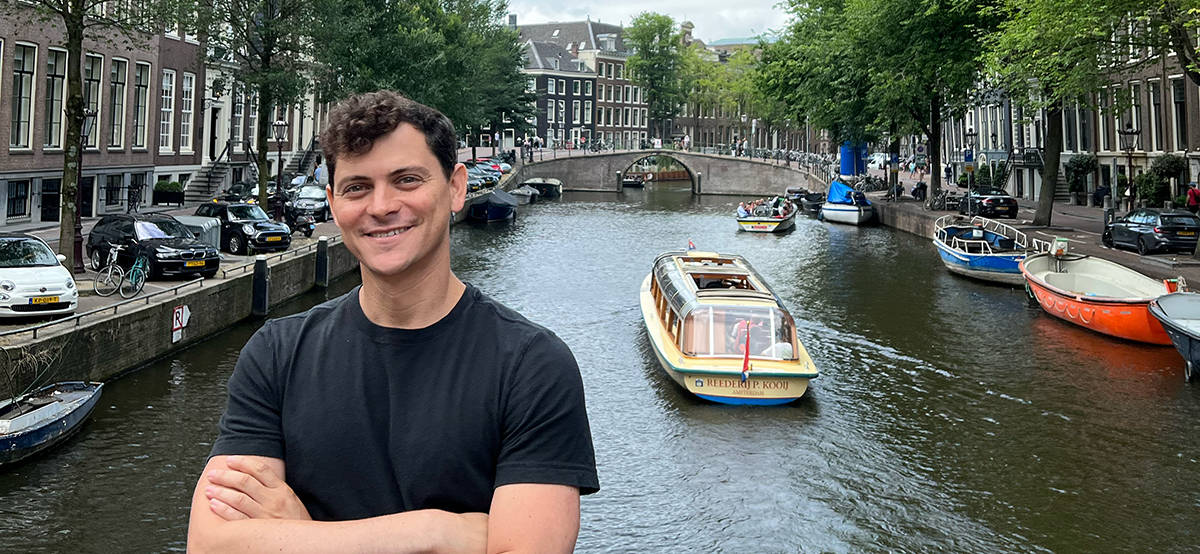
Welcome! Every day I wake up with one goal in mind: “How can I help other people travel better for less?” My mission is to help travelers like you realize their travel dreams!
Since 2008, I’ve helped millions of people save money, travel more, and have a more authentic experience in the destinations they visit.
This website has been featured in major media time and time again because it’s got the best budget advice out there. My goal is to make you a smarter traveler so you can go where you want as often as you want.
Learn more about my story >>>
Top Articles
- How to Find Cheap Flights
- How to Find Cheap Accommodation
- How to Choose a Backpack
- 17 Steps for Planning a Trip
- My Ultimate Packing Guide
- How to Buy Travel Insurance
- 11 Tips for New Travelers
- My Favorite Hostels
- Solo Female Travel Tips
- How to Pick the Right Travel Credit Card
- 14 Travel Scams to Avoid
- 15 Ways to Work Overseas
My Advice Has Been Featured In:

Top Resources
Over the last 17 years, I’ve used hundreds of companies during my travels. Some have been great, some have been awful. To help you plan your trip, here’s my list of the best travel companies. They are where all my travel planning and booking starts. Use them to book your trips too!

Books & Guides
Ten years a nomad: a traveler’s journey home.
The book is a memoir of my ten years backpacking the world and the lessons I learned along the way. It follows the arc of a trip around globe: getting the bug, the planning, setting off, the highs, the lows, the friendships made, the relationships forged (and lost), and the emotions you feel when it’s all over.
Unlike my previous books, this is not a “how to” guide but a collection of insights, advice, and stories from the road meant to convey the experience of what it’s like to quit your job, follow the road not taken, and travel the world trying to discover who you are and what the world has to offer. It is my opus on travel meant to inspire you to pursue your own travel dreams.
Find out more and pick up a copy today!
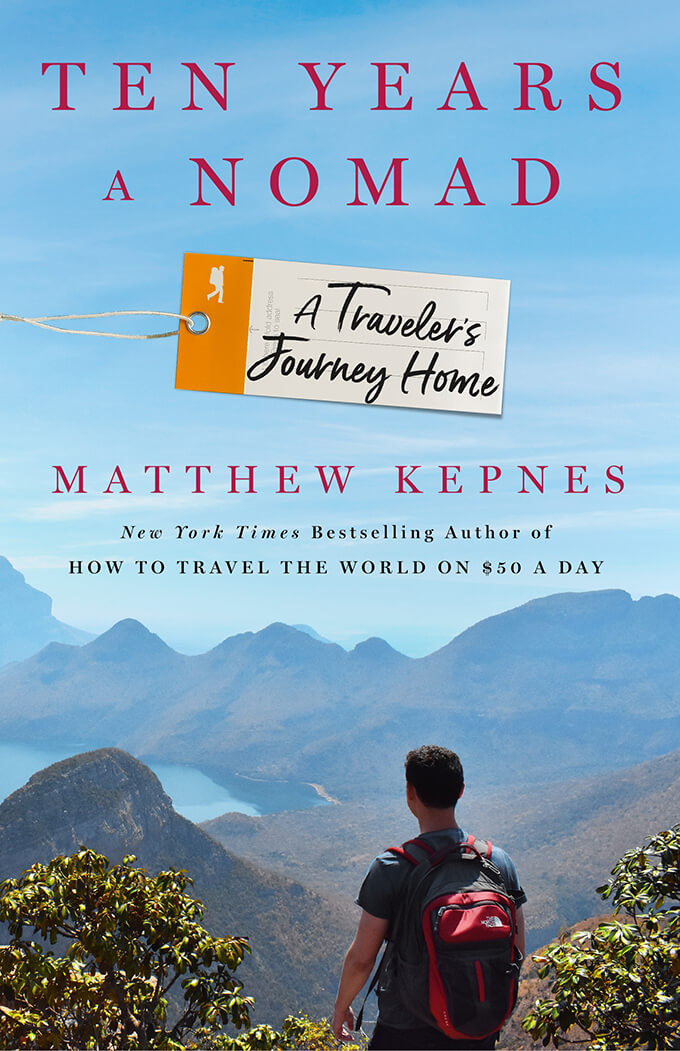
Destination Guidebooks
I’ve written a few destination guidebooks that will help you travel cheaper, better, and smarter. Unlike other guidebooks, these are specifically written for budget travelers! They contain detailed tips, advice, and insider information so you can get off the beaten path, away from the crowds, and save money when you travel. Straight to the point, no fluff.

GET YOUR FREE TRAVEL STARTER KIT
Enter your email and get planning cheatsheets including a step by step checklist, packing list, tips cheat sheet, and more so you can plan like a pro!

Road Trip to Relaxation in Manitoba
Digital Nomad Robert Reid goes in search of this prairie province's charms
National Geographic Travel’s Digital Nomad, Robert Reid , regularly explores lesser known places—or lesser known corners of well-known places. Visiting Manitoba for the fourth time is exactly the type of project he’s drawn to. “I grew up in a flyover state in the U.S. and have long been a defender of more subtle landscapes,” he says. “But Manitoba’s not as subtle as you think. There are rolling hills, boreal forest, downhill ski slopes, and very, very big skies.”
Together with National Geographic filmmaker and photographer Spencer Millsap , Reid gives us his top suggestions for making the most of Manitoba.
Wander through Winnipeg
Manitoba’s capital isn’t just any prairie town, but a metropolis of 700,000 that can shock first-timers with its size and sophistication. Begin with the new Canadian Museum for Human Rights . Overlooking bike trails alongside the Red River downtown, this twisting, towering building immediately became the city landmark when it opened three years ago. It’s worth seeing for its expansive Canadian Journeys gallery and inner architecture of suspended white alabaster walkways.
A lesser known claim to fame is how much Winnipeg rocks. Musician Neil Young grew up here, as did the members of the Guess Who (of “American Woman” glory). Local musicologist John Einarson leads engaging three-hour tours on his Magical Mystery History Tour . On the itinerary: a stop for Neil Young’s favorite donut (the chocolate-on-chocolate cake donut at the Salisbury House near his childhood home).
See what’s brewing in Neepawa

Brothers Chris and Lawrence Warwaruk tour Robert Reid through their barley fields near Neepawa, Manitoba.
About two hours from Winnipeg is the town of Neepawa . Canadian lit fans know it as the birthplace of author Margaret Laurence . Her home can be visited, and the statue that inspired the title of her best known book, Stone Angel , is in the town cemetery.
The most compelling reason to stop here, though, is the Farmery Estate Brewery . “Manitoba has the best barley in the world. But we ship it all away,” says Chris Warwaruk, shaking his head. The Warwaruks, described as “unapologetically Manitoban” by one fond local, wanted to change that. So Chris and his brother Lawrence returned to Neepawa from Winnipeg and opened the brewery. Visitors can take tours, get fish-and-chips from the brewery’s food truck, and—most fun—take a cold six-pack to drink while walking through their barley field just east of town.
Explore Riding Mountain National Park
Much of the leafy 1,150-square-mile Riding Mountain National Park —so named because it once required a horse to traverse—remains alluringly wild. Curving gravel roads pass elk, black bears, and moose (or bison near Lake Audy ), while hiking trails reach remote clear lakes and unexpected sites like Whitewater , a World War II prisoner-of-war camp.
Make Wasagaming, at the south edge of Clear Lake , your base camp. Here you’ll find the park headquarters, accommodations, kayaks to rent, and trails to hike or bike or cross-country ski.
Get in touch with your inner Viking in Gimli
Every August, big men wearing long beards and chain mail die here by the dozen. Often they perish with extravagant cries that come long before rampaging kids, bearing foam sticks, ever reach them. Yes, Gimli ’s annual Icelandic Festival is a lot of fun.
Gimli is the heart of Manitoba’s “New Iceland,” which was settled by 20,000 Icelandic immigrants in the late 1880s after the country got hit by a series of misfortunes (volcanoes, earthquakes, measles, and famine). That heritage is celebrated every August when some 50,000 people surge into the town (population 2,500) for a long weekend of fireworks, live music, carnival rides, Icelandic food, and Viking camp demonstrations.
Embrace the great outdoors at Whiteshell Provincial Park
This protected area is a popular vacation spot in Manitoba, with a string of clear lakes on the famed bedrock of the Canadian Shield. The superb Falcon Trails Resort is run by a local couple who couldn’t bear to see Manitoba’s principal ski resort shut down. So they bought it, set up a January music festival , and opened eco-cabins on Falcon Lake and the even more secluded High Lake, reached by a mile-and-a-half ATV ride or hike. There are many trails for hiking, biking, and cross-country skiing in the area, too.
Where to Stay
The Lake House in Wasagaming is a boutique hotel near the southern shore of Riding Mountain National Park’s Clear Lake. Units are modern and comfortable, with kitchenettes and plenty of modern touches—as well as a hot tub under the stars and a popular ice cream shop downstairs.
- Nat Geo Expeditions
Where to Eat
In Winnipeg, the Forks Market inhabits century-old stables at the confluence of the Red and Assiniboine Rivers near downtown. It’s popular with visitors and locals, and well worth a stop. The main dining hall is lined with appealing food stands, serving all kinds of fare—from Ukrainian to Japanese—and a craft beer stand offers local brews.
Whiteshell Provincial Park near the Ontario border is beloved locally, popular for kayaking and swimming in summer, hiking in spring and fall, and cross-country skiing in winter.
Know Before You Go
If you want to see Vikings combat at Gimli’s Icelandic Festival in August, reserve a hotel two years in advance. In Whiteshell, cottages and hotels can fill with locals months before summer rolls around. Polar bear seekers need to fly to distant Churchill , as train service recently closed (for the time being).
Robert Reid is National Geographic Travel’s Digital Nomad, exploring the world with passion and purpose. Follow him on Twitter and Instagram . Spencer Millsap is a multimedia journalist for National Geographic. Follow him on Twitter and Instagram .
Related Topics
You may also like.

Ready to plan your fall hike? Read this safety advice first.

Desert hikes and camping under the stars on a budget safari in Namibia

Before you go hiking, read these life-saving tips from first responders

How to plan a road trip along Ireland's Ceide Coast

Eight life-affirming trips to take this year

An epic rainforest road trip along North Queensland's Cassowary Coast

4 of Canada's best wildlife-watching trips, from spirit bears to cloud wolves
- Terms of Use
- Privacy Policy
- Your US State Privacy Rights
- Children's Online Privacy Policy
- Interest-Based Ads
- About Nielsen Measurement
- Do Not Sell or Share My Personal Information
- Nat Geo Home
- Attend a Live Event
- Book a Trip
- Inspire Your Kids
- Shop Nat Geo
- Visit the D.C. Museum
- Learn About Our Impact
- Support Our Mission
- Advertise With Us
- Customer Service
- Renew Subscription
- Manage Your Subscription
- Work at Nat Geo
- Sign Up for Our Newsletters
- Contribute to Protect the Planet
Copyright © 1996-2015 National Geographic Society Copyright © 2015-2024 National Geographic Partners, LLC. All rights reserved
- Search Please fill out this field.
- Manage Your Subscription
- Give a Gift Subscription
- Newsletters
- Sweepstakes
This Gorgeous Coastal City Was Just Named the Best Spot for Digital Nomads Thanks to Its Low Cost of Living
Get out and explore in between meetings.
:max_bytes(150000):strip_icc():format(webp)/Stacey-Leasca-2000-631fabdcfe624115bea0ce8e25fdec96.jpg)
Matthew Micah Wright/GETTY IMAGES
About one-third of the American workforce now works remotely, according to the Bureau of Labor Statistics . And that number, some academics suggest , may be underselling it. That means that more and more people have the opportunity to live and work from anywhere, making the " digital nomad " lifestyle a reality. But where, exactly, should you go live out those dreams? Freaking Nomads created an index of the best cities for nomads to help you decide.
In early May, the website dedicated to digital nomads released the index that it created using nine factors, including the ease of access for remote working visas, the cost of living, rent, going out to eat, the local purchasing power, and groceries relative to New York City, along with the number of coworking spaces, and the average mobile data speed. Every city it analyzed was given a weighted score to create a total index score out of 100. After looking at all the information, the team named Hoi An, Vietnam the best place for digital nomads with a score of 73.94 out of 100.
"A hidden gem on Vietnam’s coast, Hoi An ranked third for cost of living with a score of 85.48 out of 100 and joint 34th for visa accessibility with 77.78 out of 100," the findings revealed. "As a UNESCO World Heritage Site, the ancient city is home to well-preserved old buildings, colorful lanterns, and winding streets that create a magical atmosphere. Hoi An’s quaint historic charm will appeal to digital nomads wanting to start afresh in a unique corner of the world."
Delhi, India, wasn't far behind, coming in second with a score of 73.77.
"India’s capital placed first for cost of living with 89.03 out of 100 and joint 34th for visa accessibility with 77.78," the team added. "Delhi is a dynamic melting pot of culture that has something for everyone – from its vast historic attractions, such as the majestic Red Fort, to markets offering local artisan products and diverse food from all over India."
Joining these two destinations is Kuala Lumpur, Malaysia, in third with a score of 72.02, followed by Da Nang, Vietnam in fourth with an index score of 71.32. Mumbai, India, rounded out the top five with a score of 69.81 thanks not only to its lower cost of living but also to its cultural riches, including its "expansive beaches, bustling street markets, and delicious cuisine." But really, as a digital nomad, you don't have to choose. Instead, you can choose to live in each for as long as you want. And isn't that neat?
Related Articles
Does Robert live in his RV full time?
What is the travel trailer Robert tows?
Where does Traveling Robert live?
What is boondocking and does Traveling Robert boondock?
Who makes the videos for Robert on his YouTube channel?
Where does Robert love to travel the most?
Who makes the music in Robert's videos and who are the back up singers in Riding in My Rv Intro 2018?
Is Robert married?
How can I support Traveling Robert?

we fix ugly websites
Hi! I'm Robert Morales, aka Traveling Robert. Join us as we embark on new adventures every week, traveling from city to city, exploring popular destinations to hidden gems. In the process you will learn tips and tricks of safer RV'ing, solar energy options and much more. Thank you and see you on the road!
Subscribe To Our Mailing List
Stay connected with our rapidly growing community. Receive email notifications of new events as they are published.
- Food & Drink
- What to pack
- City Guides
- Travel Hacks
- New Zealand
- North America
- Latin America
Copied to clipboard!
Want to become a digital nomad in Italy? Here’s how!
By Janine Magnin
Janine is a freelance writer, traveller, music educator, and a PhD student. She was born in Cape Town, South Africa and now lives in Hertfordshire, United Kingdom.
Published on Jun 05, 2024 | 7 min
Table of Contents
Who can apply for an italian digital nomad visa, what do you need to apply for the italian digital nomad visa.
- What's the process for applying for the Italian Digital Nomad visa?
How long is an Italian Digital Nomad visa valid?
Best cities to live out your italian digital nomad dreams.
Finally! We now have an Italian Digital Nomad Visa ! This is not just a visa, it’s a gateway to a new world of freedom and flexibility in how and where we work. Italy , a country that has always celebrated innovation and creativity, is now embracing the digital nomad trend. It has joined the ranks of countries offering skilled immigration policies that reflect this brave new world in which we now move more freely.
Italy’s Digital Nomad Visa is a win-win for everyone. We get to live the La Dolce Vita , a life filled with the sweet moments of exploring iconic Renaissance history, eating pasta and gelato, and visiting Juliet’s balcony. And while we enjoy this lifestyle, Italy’s economy gets a boost from us nomads renting or buying, spending money, and making money within its borders!
So, if that sounds just as amazing to you as it does to us, then this is your guide to the Italian Digital Nomad Visa.
Simply Italy
According to a recent Italian government decree , you need to “carry out highly qualified work activities through the use of technological tools that allow them to work remotely, autonomously, or for a company that is not resident in the territory of the Italian state.”
The Italian Digital Nomad visa is specifically designed for non-EU and non-EEA professionals who work remotely, as EU nationals already have the freedom to move, work, and live within the European Union.
Image source: Contiki
- A passport that is valid until three months after your visa expires
- 2x passport photographs
- A Digital Nomad Form
- A work contract with a company OR proof of self-employment status
- Proof of sufficient means (a minimum income of €28,000 per year)
- Evidence of a minimum of six months work experience (5 years if you do not have a university degree)
- Proof of Italian accommodation (rental agreement or proof of purchase)
- Police clearance demonstrating that you haven’t had a criminal record in the past five years
- Medical insurance
- Proof of visa application fee (€116)
What’s the process for applying for the Italian Digital Nomad visa?
- Apply for a Digital Nomad visa at your nearest Italian consulate
- Fill in the visa application form and pay the fee
- Wait 30-90 days
- If your application is accepted, you’ll have on your visa (you can renew it)
- Once you are in Italy, you will need to apply for a residency permit from the police headquarters within the province that you choose to live within eight days of arrival
- You will need to apply for a tax identification number or “Codice Fiscale”, which is issued by the Italian Revenue Agency
- You will also need to open a VAT position in Italy regardless of an Italian bilateral agreement with your home country
You get 365 days from the date that your visa is issued. But, you can renew it annually as long as you continue to fulfil the visa’s conditions and requirements.
You’ve got your visa, yay! Now all that’s left is to figure out which Italian city you’ll be calling your home while you live your best work and travel life.
Digital nomad guide: South Korea
Rome is known as the ‘Eternal City’ and is the heart of the Roman Catholic Church. This ancient city has witnessed the rise and fall of many empires – including the Ancient Roman Empire. The legend is that Romulus and Remus founded Rome in 753 BC and were descendants of Aeneas, who escaped the fall of Troy. They were twin brothers, the offspring of a human mother, and Mars, the Roman god of war.
It’s the perfect combination of history and modernity. You’re right on the doorstep of the Pope, the Colosseum, the Roman Forum, and the Pantheon. The culture is fun and vibrant, the food is delicious, the weather is warmly Mediterranean, and the locals are welcoming. Although it is one of Europe’s most expensive tourist cities, the cost of living is almost half that of London by comparison!
Milan is the highest city in Italy and is known as its fashion capital – so make sure to prepare all your best outfits. Here, you can buy big-label brands (like Prada) for less than you would in Paris or London. Aside from fashion, you’ll find important and renowned Renaissance artworks, such as Leonardo da Vinci’s The Last Supper painting and Sandro Botticelli’s The Madonna of the Book .
Milan is a bustling, cosmopolitan university city with 14 universities and streets full of vibrant student nightlife. It is also known as Italy’s most LGBTQIA+ friendly city and is also one of the most expensive cities. However, it’s a popular tourist town and perfect for nomads still at the beginner stage of learning the Italian language .
15 best things to do in Italy for a culturally immersive experience
Florence is the capital of the Tuscany region and is known as the birthplace of the Renaissance style. It is famous for its architecture, such as the red dome of the Duomo Cathedral, and for artworks by Michelangelo, Botticelli, and Leonardo da Vinci. Its signature dish is the Florentine steak – a tender, marbled rare steak usually shared by at least two people.
Florence is a smaller, safe, and international city. It is also a popular tourist destination. It is brimming with historical sites, artwork, architecture, and world-renowned museums and galleries.
Naples is a UNESCO World Heritage Site and one of the most ancient European cities. Its attractions include the Palace of Caserta and the Roman ruins of Pompeii and Herculaneum. Naples is also famous for the Neapolitan dialect and for being the birthplace of pizza!
Naples is a sunny city filled with impressive architecture and humming markets. It is considered one of the cheapest Italian cities to live in, and with all the museums and subterranean walking tours, you’ll have plenty to do on your days off! It is rich in cultural history and has a bustling atmosphere.
Best time to visit Italy: your ultimate guide to the perfect Italian getaway!
Turin is an important business and cultural city in Northern Italy. It is a highly walkable city known for its palaces, piazzas, opera houses, and Rococo and Art Nouveau architecture. Turin is also famous for being the location of the House of Savoy, an Italian royal house built in 1003 AD and home to the former Savoy dynasty.
Turin is known as an elegant, open-minded and welcoming city. It offers a high quality of life and a low cost of living. It has a thriving economy and is said to be the third best city to live in Italy. It’s also not as touristy as other Italian cities.
Image source: Antonio Sessa / unsplash
Picture vineyards, sandy beaches, and Mount Etna. Sicily is the football-shaped island located just south of the Italian boot. It’s only 1.5 miles from the mainland and was once inhabited by the Greeks before coming under Roman rule during the Middle Ages. Sicily is home to some of the world’s best-preserved Greek and Roman temples, such as the Temple of Concordia in the Valley of the Temples. Despite Sicily’s historical association with the Mafia dating back to the 19th century, there has been a determined and community-led effort to drive them out of the island.
Sicily is a very affordable place to live and has the lowest cost of living in Europe—houses can cost just €2! But these are usually abandoned and require a lot of fixing up—perhaps perfect for anyone interested in doing a bit of DIY in their spare time. Sicily is ideal for nomads looking for peace and quiet, medieval streets, stunning beaches, and delicious food.
Italian Escape
Want to explore a taste of Italy before you make your own submission to become a digital nomad here? Jump on Contiki’s Simply Italy trip or an Italian Escape and Silcily adventure .
A semester in Florence showed me how real Italians live
Here are our top reasons why you should visit italy, stop dreaming and make sh*t happen.
Ultimate Italy
Our website uses cookies to ensure you have the best experience, showing content and offers that are most relevant to you. To learn more about this, see our Cookie Policy.

These 8 Storybook US Towns Will Make You Think You've Teleported to Europe
W hether you’re yearning for the romantic allure of Paris, the landscapes of Tuscany, or the windmills of Amsterdam, you don’t need to book an international flight to experience the magic of Europe. Having vanlifed for two years and road-tripped through most of America, I’ve seen some truly surprising places where I had to blink twice to believe I wasn’t transported across the Atlantic.
Believe it or not, there are American towns that boast similar cobblestone streets, tasty boulangeries, and half-timbered homes straight out of a European fairytale. If you don’t have the budget or time to travel overseas, these 8 West American towns will give you a taste of European culture without ever having to leave the country.
1. Leavenworth, Washington
Looks like: Bavarian Village, Germany
In the heart of the Cascade Mountains, Leavenworth , Washington, takes its inspiration from the culture of a Bavarian village. Originally a timber and railroad town, Leavenworth transformed itself in the 1960s into an Alpine-style destination.
With its half-timbered architecture, colorful flower boxes, and a mountainous backdrop, it’s easy to see why it feels like a slice of Germany in the Pacific Northwest. This transformation was driven by a desire to revitalize the town’s economy, and it has since become a popular tourist attraction.
Things to do: The delightful downtown area is filled with unique shops and authentic Bavarian restaurants. During the winter, the town is perfect for skiing at nearby Stevens Pass or enjoying the famous Christmas Lighting Festival. In the warmer months, explore beautiful hiking trails, wine-tasting at local vineyards, or participate in the lively Oktoberfest celebrations that rival those in Germany.
Read Also: 18 Weirdest Roadside Attractions in the US That Will Make You Do a Double Take
2. Solvang, California
Looks like: Danish Village, Denmark
Located in the Santa Ynez Valley, Solvang is often called the “Danish Capital of America.” Founded in 1911 by a group of Danish educators wanting to escape the harsh Midwestern winters, Solvang is a lovely replica of a Danish village.
Its cute streets are lined with traditional Danish architecture, including windmills, thatched roofs, and a prominent clock tower that closely mirrors the old-world charm of Denmark. Walking through Solvang, you might forget you’re in California as the intoxicating aroma of freshly baked pastries wafts from the numerous authentic Danish bakeries.
Things to do: Explore the boutique shops with special imports, savor pastries at the famous Olsen’s Danish Village Bakery or visit the Elverhøj Museum of History & Art. For a more active day, go for a scenic bike ride through the vineyards, go wine tasting at one of the local wineries, or take a carriage ride through the town. Solvang also hosts several festivals, such as Danish Days in September.
Read Also: 33 Awesome Day Trips from Los Angeles You’re Friends Will Be Jealous Of
3. Vail, Colorado
Looks like: Alpine Village, Switzerland
High up in the Rocky Mountains, Vail exudes the charm of an Alpine village straight out of Switzerland with its chalet-style buildings and snow-capped mountain views. Founded in 1966 as a ski resort, the town was designed to resemble a traditional European ski village, and it quickly grew into a premier year-round destination.
The town’s architecture and atmosphere resemble those of Swiss mountain villages, with its chalets and lively European-inspired town center. Vail’s streets are adorned with twinkling lights during the winter months to make it feel even more magical.
Things to do: Vail Ski Resort has some of the best skiing terrain in North America, or take a gondola ride up the mountain during the summer. Wander through Vail Village for gourmet dining at one of the many high-end restaurants, or relax at a cozy café with a pristine mountain view. The town also hosts several cultural events, including the Vail Film Festival and the Bravo! Vail Music Festival.
4. Fredericksburg, Texas
Looks like: German Village, Germany
Deep in the Texas Hill Country, Fredericksburg celebrates its deep German roots. Founded in 1846 by German immigrants, this town has preserved much of its original character through its architecture and cultural traditions, but with a bit of Texas flair.
Walking through Fredericksburg, you’ll be reminded of Germany with its distinct half-timbered historic buildings and biergartens. The surrounding countryside, with its rolling hills, is reminiscent of the Bavarian countryside.
Things to do: Main Street has an eclectic mix of boutique shops, galleries, and traditional German bakeries. Visit the Pioneer Museum to learn more about the town’s history. Taste some local wines at one of the many wineries in the area or rock climb in the nearby Enchanted Rock State Natural Area. And if you’re visiting in October, the town’s Oktoberfest celebration is a must-see, complete with authentic German beer, food, and lively entertainment.
Read Also: 21 Unexpected Day Trips in East Texas That’ll Surprise Even Long-Time Texans
5. Napa Valley, California
Looks like: Tuscany, Italy
In Northern California, Napa Valley is synonymous with world-class wine production and rolling vineyard landscapes that might make you feel like you’re wandering through Tuscany. Established in the mid-19th century during the California Gold Rush, Napa Valley has transformed into one of the premier wine regions globally. Even my French friends have good things to say about their wine.
Its rolling hills, endless vineyards, and Mediterranean-style estates closely mirror the iconic wine region of Tuscany, often lauded for its beauty and agricultural history. The town of Yountville, in particular, is often compared to a picturesque Italian village with its stone buildings and chic boutiques.
Things to do: Sample award-winning wines at one of the many vineyards and wineries that dot the region, including renowned names like Robert Mondavi and Domaine Carneros. Stop at one of the many gourmet restaurants, including French Laundry, a three-star Michelin restaurant. Start your day early with a sunrise hot air balloon ride over the valley, then experience the Napa Valley Wine Train that takes you through the scenic countryside.
Read Also: Perfect Day Trip to Napa Valley Itinerary for Wine Lovers
6. Santa Barbara, California
Looks like: Spanish Colonial City, Spain
Between the Santa Ynez Mountains and the Pacific Ocean, Santa Barbara is often likened to a colonial seaside town with its red-tiled roofs, white stucco buildings, and palm-lined streets. Founded in 1786 as a Spanish mission, Santa Barbara has retained much of its old-world charm while blending it with modern luxury.
Known as the “American Riviera,” Santa Barbara’s architecture, influenced by the Spanish Colonial Revival style, transports visitors to an Andalusian town in Spain. With ornate fountains and courtyards all around, this town also has beautifully preserved historical sites. Places like the Old Mission Santa Barbara mirror the architectural style of traditional Mediterranean towns.
Things to do: Walk State Street for boutique shopping and delicious dining experiences. Visit the historic Santa Barbara Mission, a Spanish-style church dating back to 1786, or the Santa Barbara Museum of Art. Sunbathe at one of the many beaches or bike along the scenic coastline. For a further trip, go wine tasting in the nearby Santa Ynez Valley or take a sunset cruise along the coastline.
7. Poulsbo, Washington
Looks like: Norwegian Village, Norway
Tucked away on Liberty Bay, Poulsbo is often called “Little Norway,” which pays homage to its Scandinavian roots. The town was founded in the late 1800s by Norwegian immigrants who were drawn to the region because it reminded them of the fjords and forests of their homeland.
Poulsbo’s waterfront, complete with colorful Norse-patterned buildings and wooden docks, closely resembles a small fishing village in Norway. The town’s connection to Norway is deeply rooted in its local customs, festivals, cuisine, and Scandinavian architecture. Visitors can also find a replica Viking ship and other nods to Norse culture throughout the town.
Things to do: Stroll historic Front Street to shops filled with Scandinavian imports. Try the famous breads and pastries at Sluys Poulsbo Bakery, then a seafood meal at an authentic Norwegian restaurant like Sons of Norway. Go kayaking on Liberty Bay or walk the scenic Liberty Bay waterfront trail. Poulsbo also hosts annual events like Viking Fest in May.
8. Venice, California
Looks like: Venice, Italy
Venice, California, is an eclectic coastal neighborhood known for its bohemian spirit and dynamic street life. It is often compared to its namesake, Venice, Italy. Founded in 1905 by developer Abbot Kinney, Venice of America was designed to be a seaside resort town that would resemble the famous Italian city.
The Venice, California canals were modeled after the historic Venetian waterways. However, they were initially more expansive before some were eventually filled in to make way for roads. What survives today still gives a glimpse into Kinney’s vision, complete with bridges and elegant walkways.
Things to do: Although Venice itself isn’t so much like its European counterpart, the area of the Venice Canals is. After taking a romantic gondola ride or paddleboarding the waterways, walk along the boardwalk to watch street performers and masterful skateboarders doing 360’s.
Read Also: How Can You Pack the Best of Los Angeles into 24 Hours? Follow This Route
Final Thoughts: Places In America That Look Like Europe
Isn’t it lovely that you can get a taste of some far-off places without the need for a passport? Of course, it doesn’t replace the real thing, but it’s a great way to experience different cultures and architecture right here in the USA. So, bon voyage!
If you’re ready to explore more, check out our other articles for more travel inspiration all across West USA.
Before you Close That Tab…Looking for More Inspiration?
- The Top 8 Hardest Hikes in US National Parks and Why They’re Worth It
- 11 Dreamy Lakes in West USA That Will Take Your Breath Away
- 9 Overrated Tourist Traps in the US to Steer Clear of During Your Next Road Trip


IMAGES
VIDEO
COMMENTS
We are Robert and Ily, Cuban born, Floridian by choice, insatiable travelers. We share our RV travel stories, producing inspiring, informative, and entertaining videos, enjoying the journey as ...
Discovering Dawson City, the Klondike, and Cassiar Highways - Season 10 (2023) Episode 39. From Valdez to Chicken Alaska: A Journey to Remember - Season 10 (2023) Episode 38. The Road to Beautiful Valdez, Alaska - Season 10 (2023) Episode 37. The Tunnel to Whittier and the 26 Glacier Cruise - Season 10 (2023) Episode 36.
Traveling Robert - Video creator, producing inspiring, informative, and entertaining travel videos. His videos are mainly published on YouTube, but some of them are also available in Amazon Prime Video and Facebook. Traveling Robert Youtube Videos West, Florida, Summer 2020 and etc.
We visit Toronto, Niagara Falls, the One Thousand Islands, Ottawa, Montreal and Quebec City.We tow a 2015 Winnebago Micro Minnie 1706FB travel trailer. You a...
We visit the Arecibo Observatory, The Camuy River Caverns, the westermost part of the island, and Old San Juan.
Des Moines, Iowa - Summer 2021 Episode 6. Exploring Northern Ohio: Toledo and Vermilion - Summer 2021 Episode 7. Exploring Northern Ohio: Cleveland and Cuyahoga Valley National Park. Erie, Pennsylvania and Presque Isle State Park - Summer2021 Episode 9. From Niagara Falls to the Grand Canyon of the East - Summer2021 Episode 10.1.
Financial Case Studies. I'll teach you exactly how to do this in my free email course! The adventures of Nora Dunn, The Professional Hobo, digital nomad since 2006. Learn how to travel full-time in a financially sustainable way!
Matthew Kepnes. Hi, I'm Nomadic Matt, the New York Times best-selling author of How to Travel the World on $50 a Day and Ten Years a Nomad, as well as the founder of this website! And I'm here to help you save money on your next trip. Whether two day, two months, or two years, here's my guide on how you can travel more without spending a ...
4) Packing for nomadic traveling. While generally straightforward, be sure to think about things that you may not be able to get in other countries. It's helpful to have a mini first-aid kit with you (ibuprofen, antihistamine, etc.) You can also ask your doctor to write a just-in-case prescription for a broad-spectrum antibiotic.
When you've been on the road for a year, you learn some things. You learn things about yourself, you learn things about your partner, and you learn things about your priorities. Before I launch into all of that and more from our year of nomadic travel, it makes sense to get into how we got here. For a bit of background, we closed on our house ...
7. Heymondo. 8. Travelex Insurance. 9. AIG Travel Guard. Nomad travel insurance recapped. Travel insurance can safeguard your nonrefundable reservations and reimburse you for any unexpected ...
Last year was a record for RV sales, according to the data firm Statistical Surveys. More than 10.5 million households own at least one RV, a jump from 2005 when 7.5 million households had RVs ...
Nomad Stays is proud to have her as part of our team managing Pinterest and Newsletters to the nomads giving you insights on the latest at Nomad Stays. As a nomad herself and extreme adventurer and solo traveller who better to give you these insights. She is 'best' above 2000 meters altitude, she owns three T-shirts and thirty pairs of ...
— Robert Reid, Nat Geo Travel's Digital Nomad Robert Reid's notebook collection (Photograph by Robert Reid) "When people envy my career as a travel photojournalist, they seem to forget ...
11. Tallinn, Estonia. The Estonian capital of Tallinn is an ideal digital nomad destination for those seeking a budget-friendly environment with a rich, Baltic cultural experience. This smaller ...
Family & Senior Travel. Hello! I'm Nomadic Matt! Welcome! Every day I wake up with one goal in mind: "How can I help other people travel better for less?". My mission is to help travelers like you realize their travel dreams! Since 2008, I've helped millions of people save money, travel more, and have a more authentic experience in the ...
The changes will go into effect on June 1. For digital nomads, as well as self-employed and remote workers, visas will extend to five years—a significant jump from 60 days—with each stay ...
In this crossing paths we got to spend a evening with Traveling Robert who is an RV nomad and creator. He has a Youtube channel and runs the living the RV D...
traveling robert. In 2014 we acquired a small travel trailer, a Winnebago Micro Minnie 1706FB to explore the United States of America and beyond. In 2020 Winnebago loaned me a brand new 1708FB so I could travel as a brand ambassador.
National Geographic Travel's Digital Nomad, Robert Reid, regularly explores lesser known places—or lesser known corners of well-known places. Visiting Manitoba for the fourth time is exactly ...
2. U.A.E (United Arab Emirates) The UAE offers a 0% income tax rate for individuals, making it a highly attractive option for remote workers, and the best for financial professionals in particular ...
Yet many nomadic families are able to maintain a budget when living full time on the road. Kiselev's family budgets about 1,500 to 2,500 euros ($1,629 to $2,715) per month for housing. "It's ...
Digital nomads in particular travel far and wide in search of the perfect place to make their base, ranging from legendary cities to relatively unknown destinations. One tiny country sandwiched between France and Spain was named as one of the best for digital nomads, especially with a new visa implemented this year.
The annual average daily precipitation in Moscow, Russia is 2.01 mm per day. In the current month of June, Moscow, Russia can reach a low temperature of 5.46 °C and a high temperature of 18.3 °C. You can expect 2.11 mm of rain on average, each day in June. The average cloud cover in June is 62.8 % on average and you can expect maximum wind ...
After looking at all the information, the team named Hoi An, Vietnam the best place for digital nomads with a score of 73.94 out of 100. "A hidden gem on Vietnam's coast, Hoi An ranked third for ...
I'm Robert Morales, aka Traveling Robert. Join us as we embark on new adventures every week, traveling from city to city, exploring popular destinations to hidden gems. In the process you will learn tips and tricks of safer RV'ing, solar energy options and much more. Thank you and see you on the road! Stay connected with our rapidly growing ...
Apply for a Digital Nomad visa at your nearest Italian consulate. Fill in the visa application form and pay the fee. Wait 30-90 days. If your application is accepted, you'll have on your visa (you can renew it) Once you are in Italy, you will need to apply for a residency permit from the police headquarters within the province that you choose ...
Share your videos with friends, family, and the world
1. Leavenworth, Washington. Looks like: Bavarian Village, Germany. In the heart of the Cascade Mountains, Leavenworth, Washington, takes its inspiration from the culture of a Bavarian village ...
"Nomad's trails" is an epic international expedition by Rusmototravel. It starts in Moscow, the heart of Russia, and going along Volga, the biggest river in Europe, brings us to Caspian Sea. It continues in boundless Kazakh steppes and passes Altay mountains by legendary Chuya highway reaching no man's lands of Mongolia.